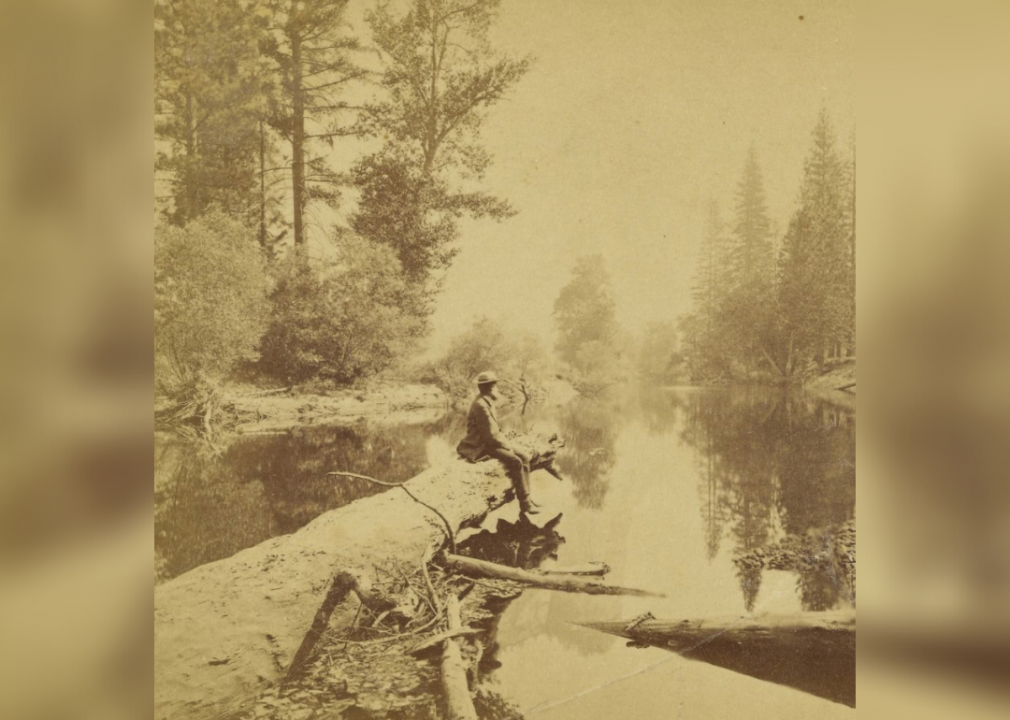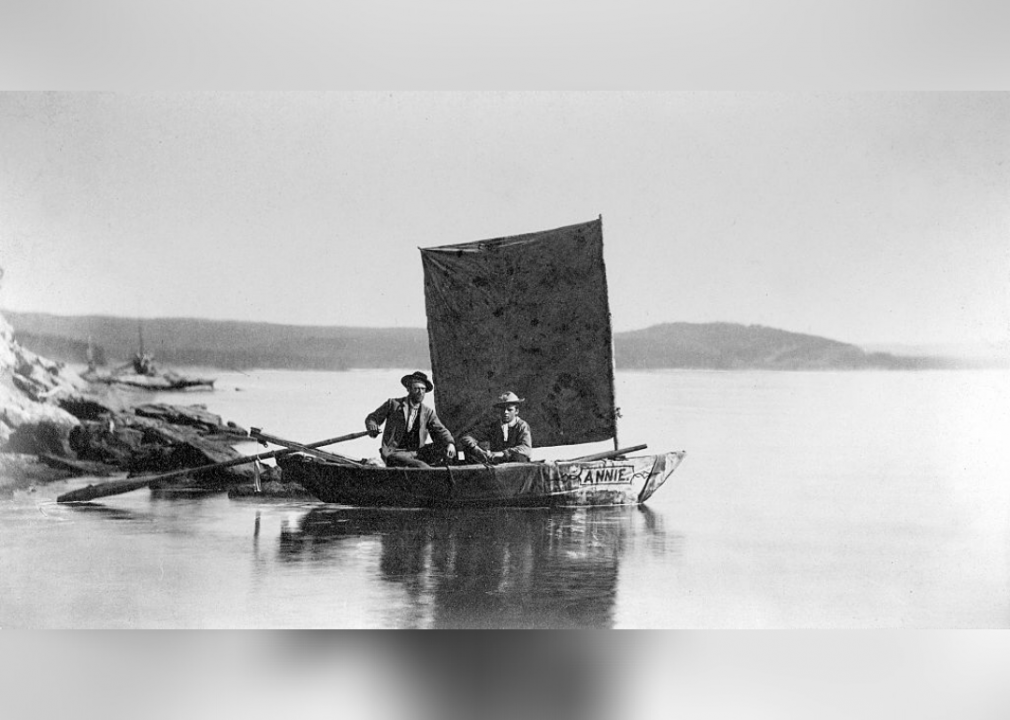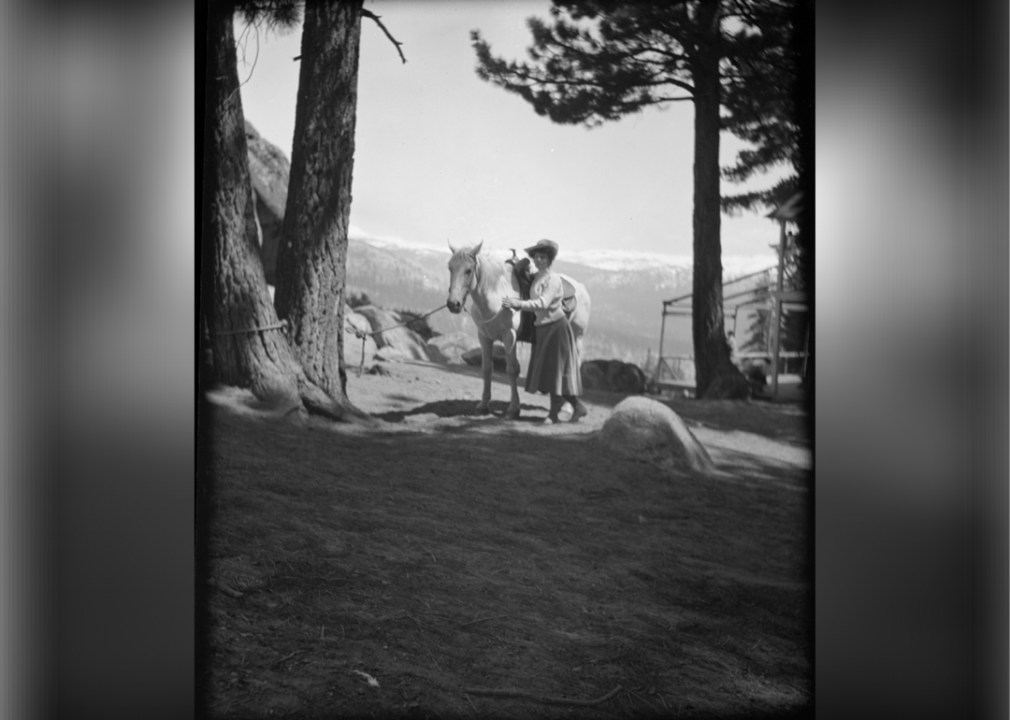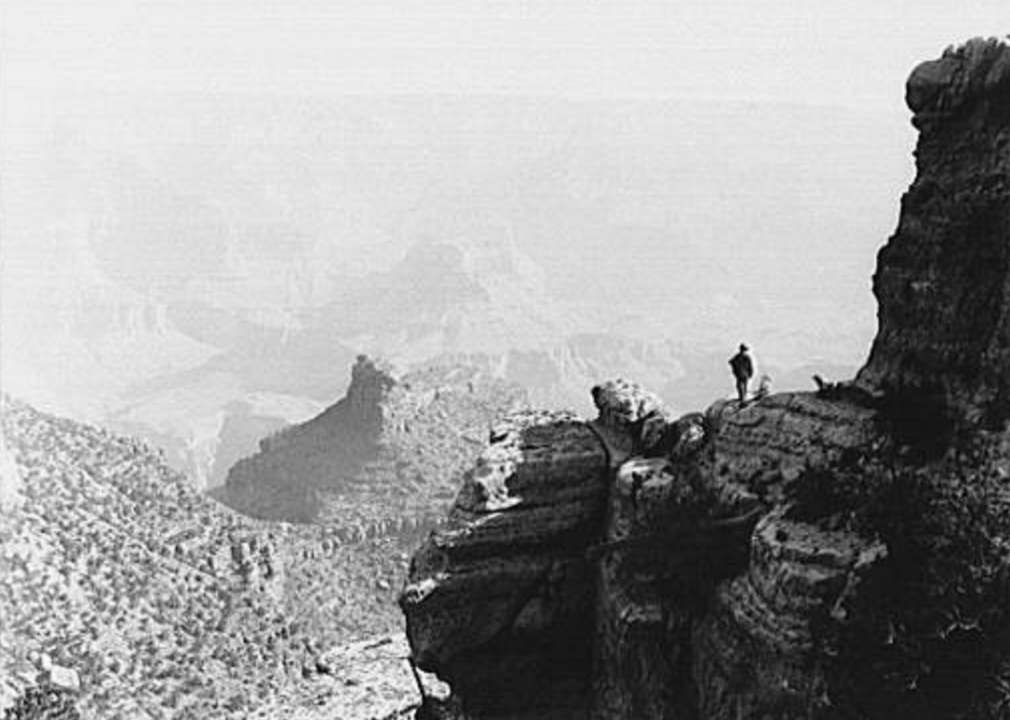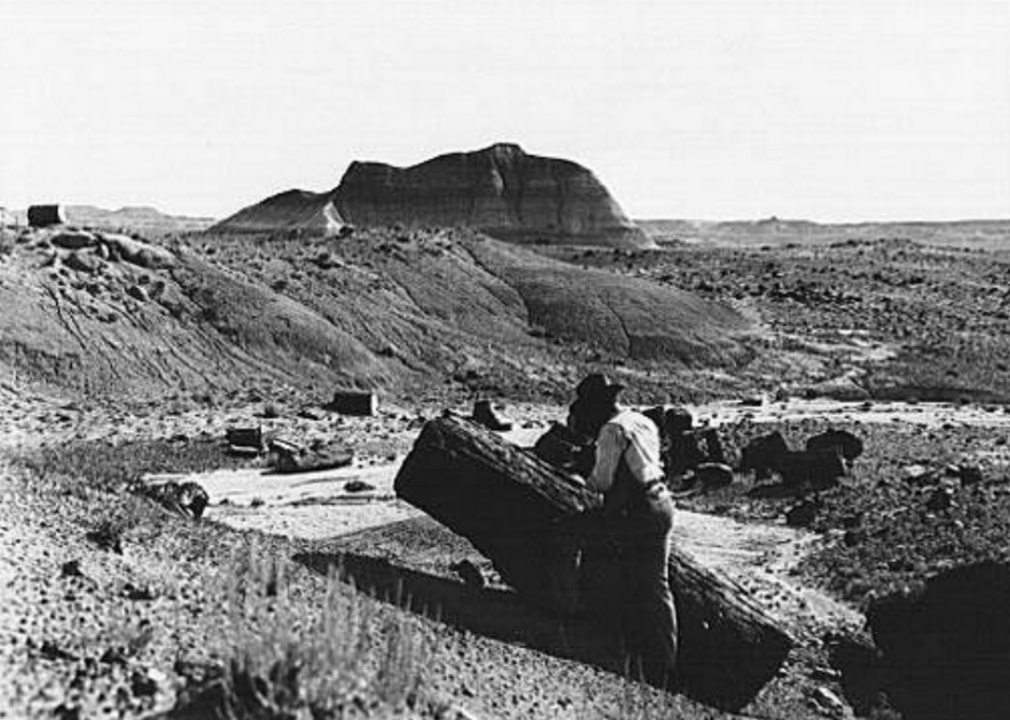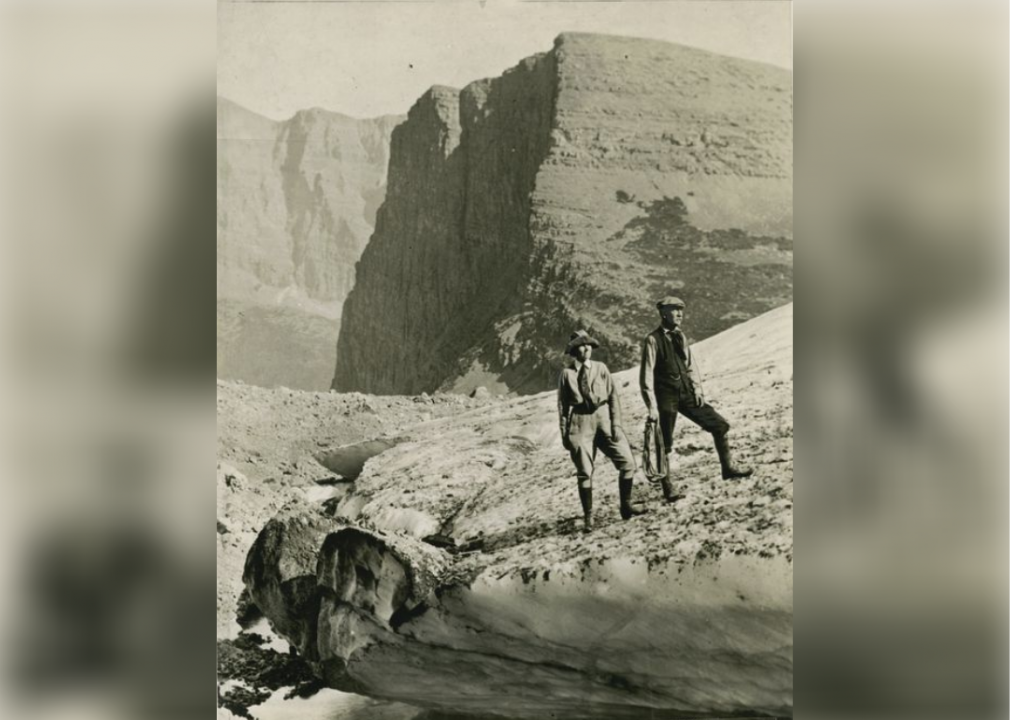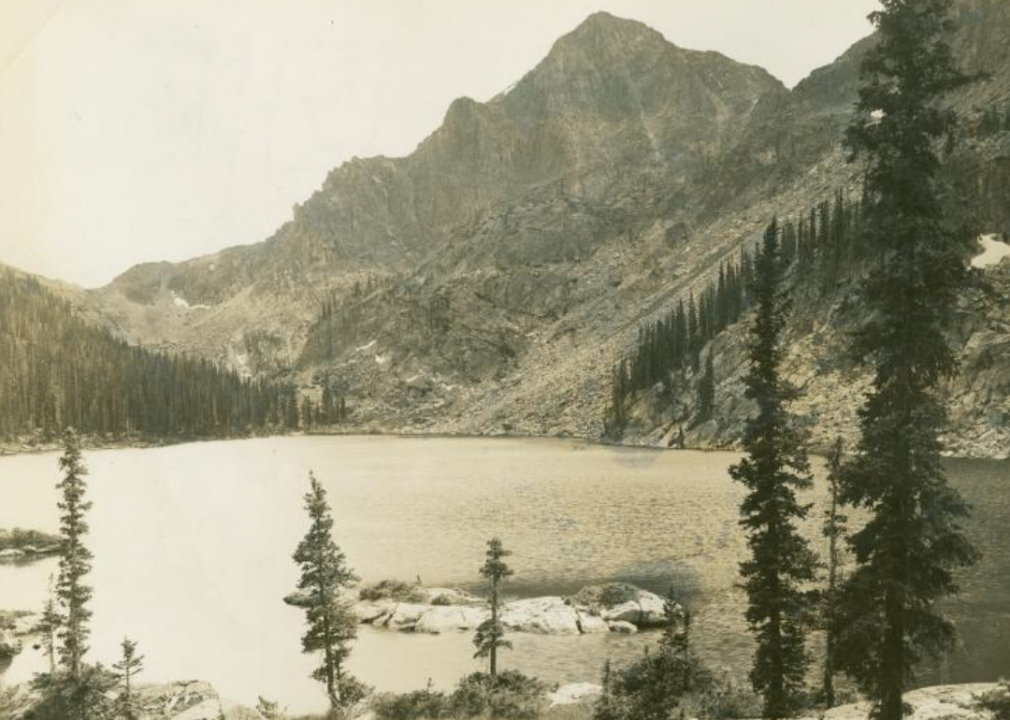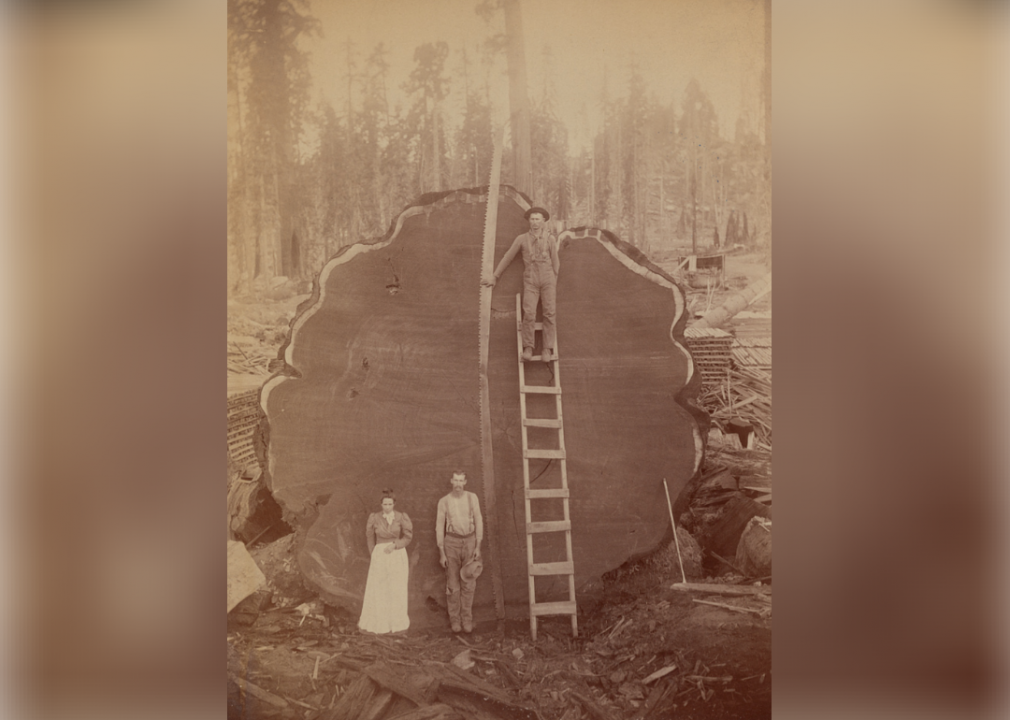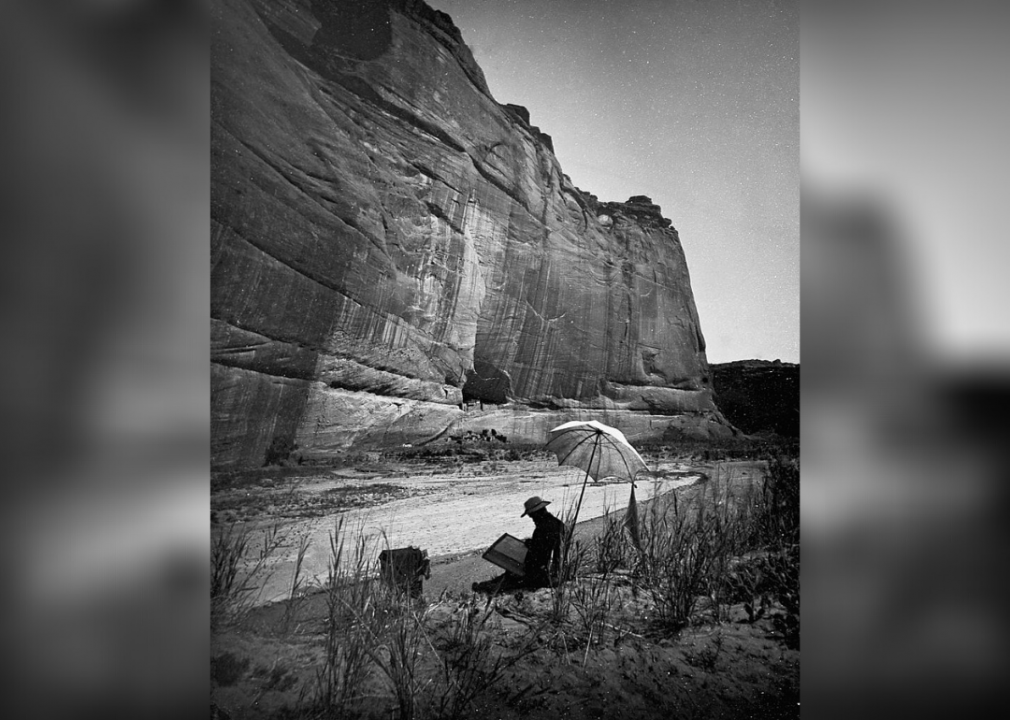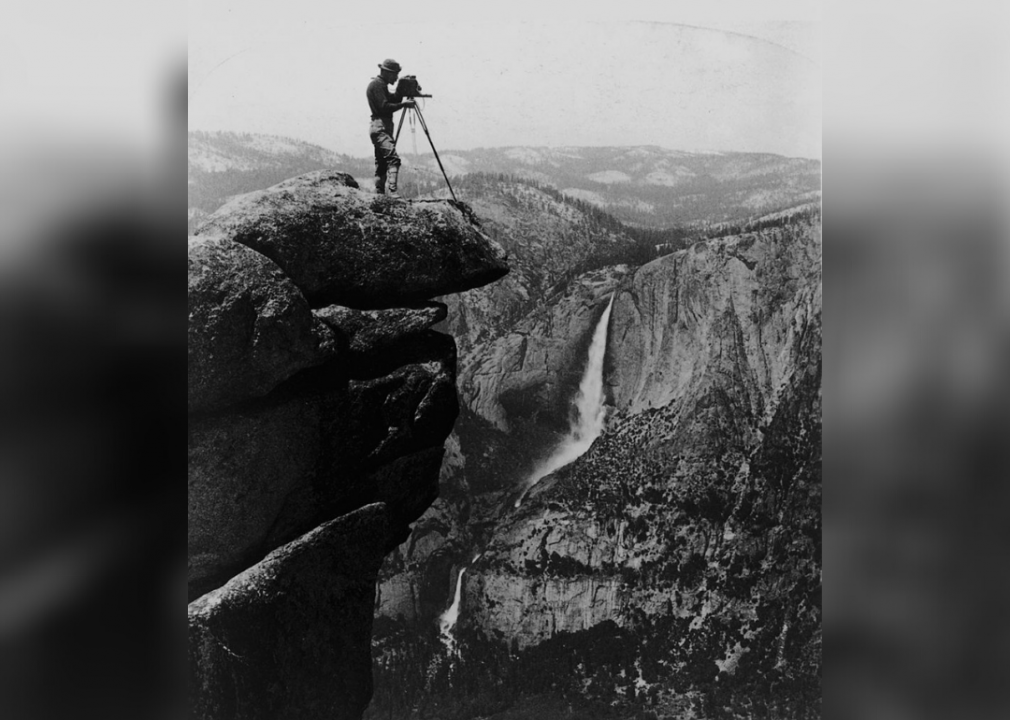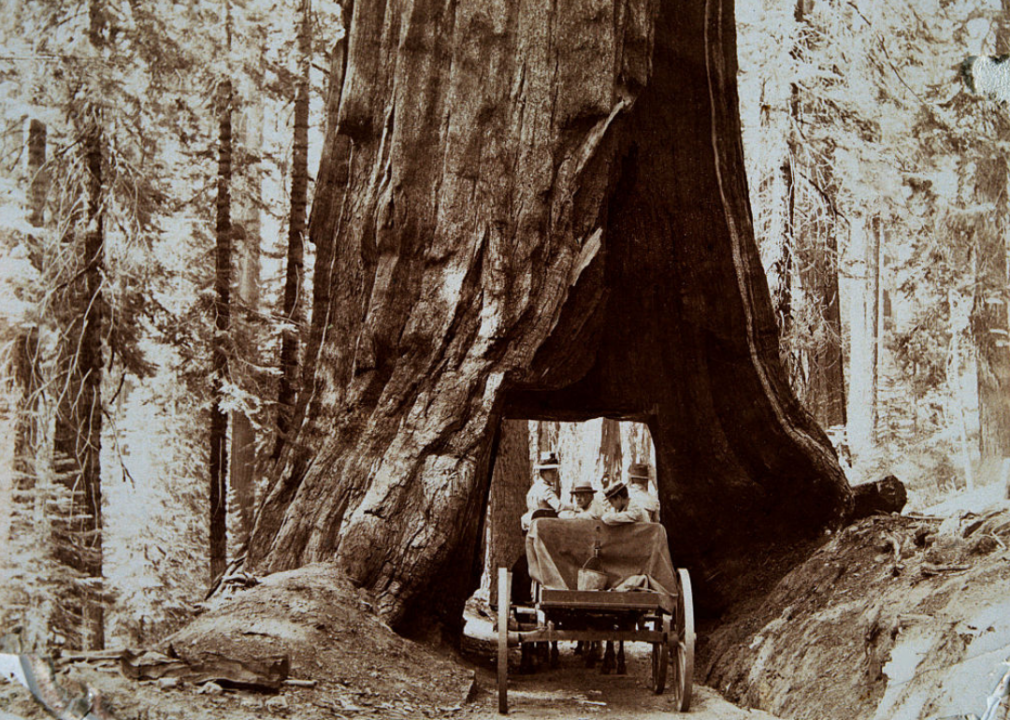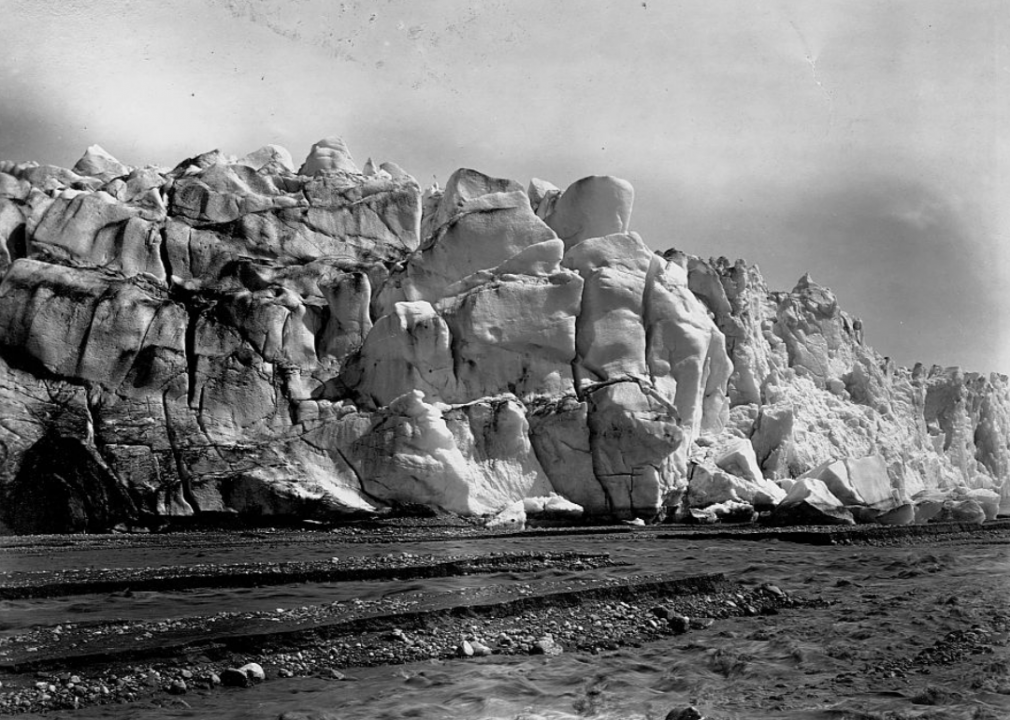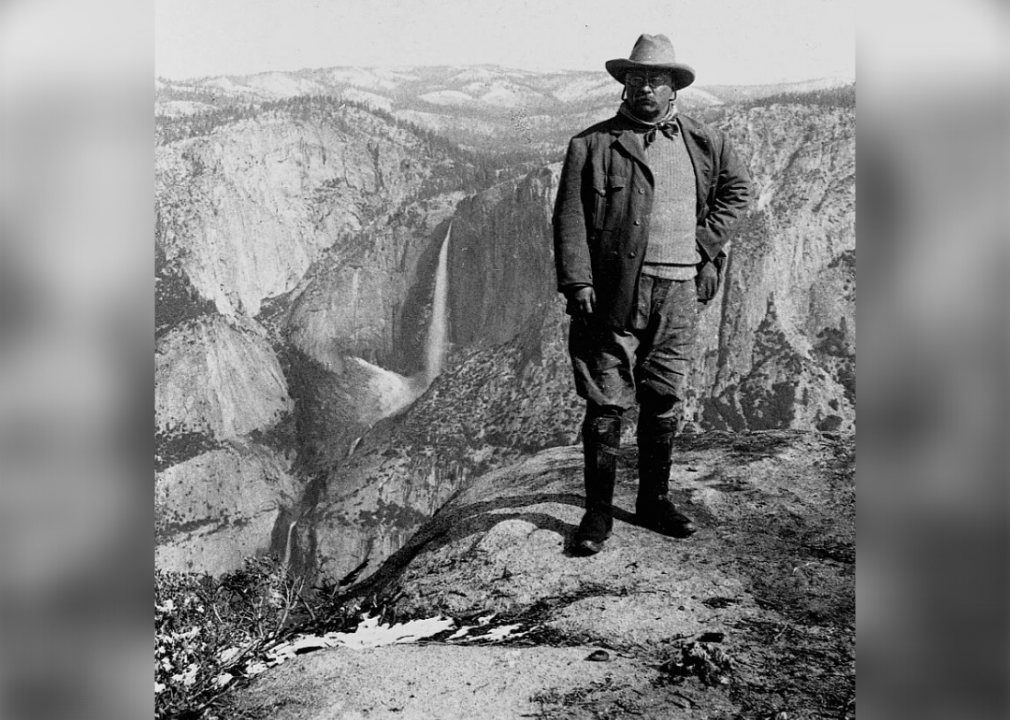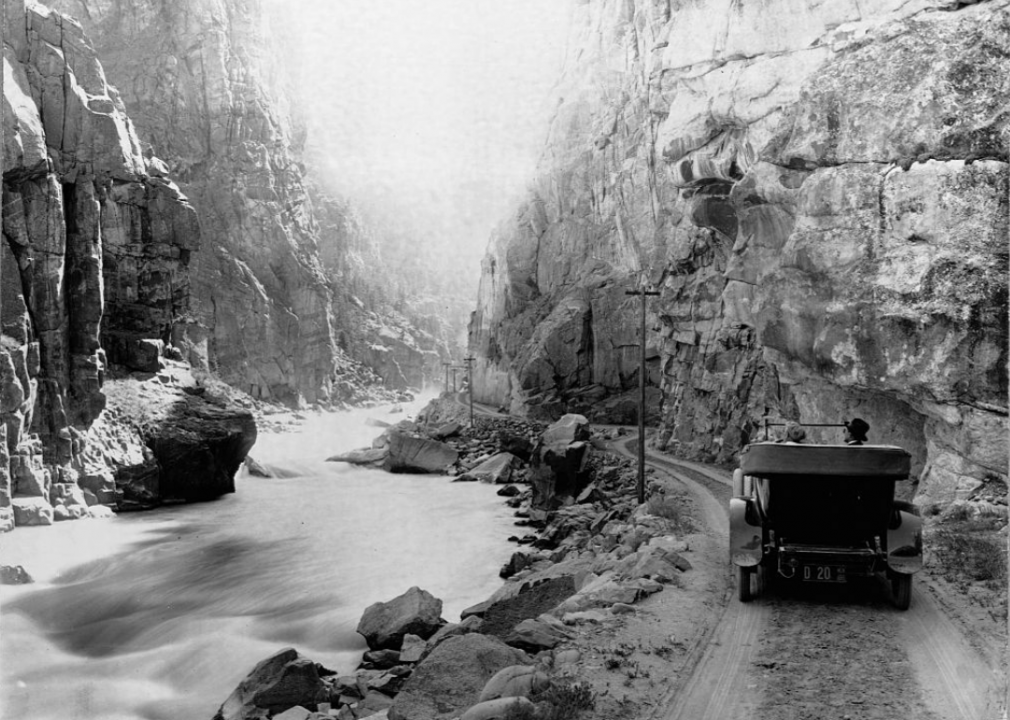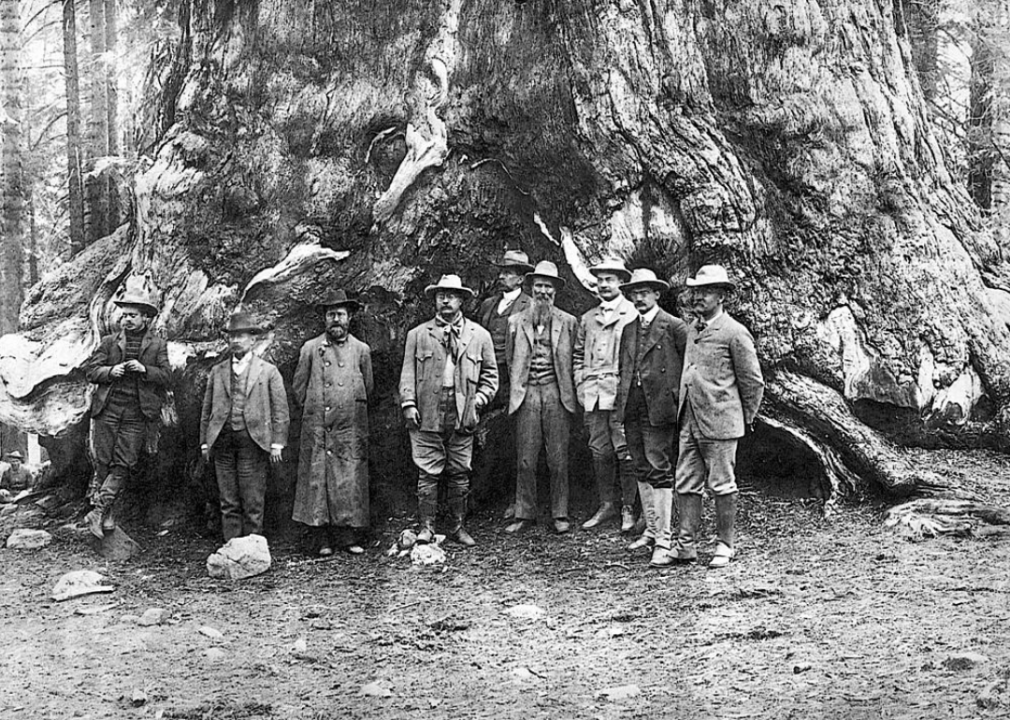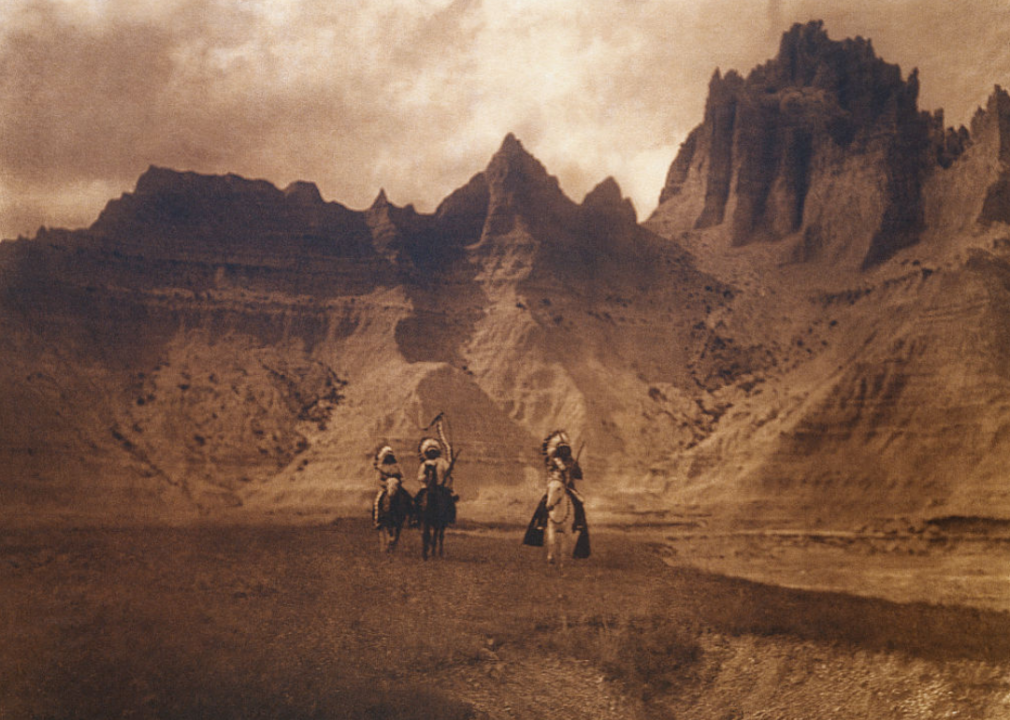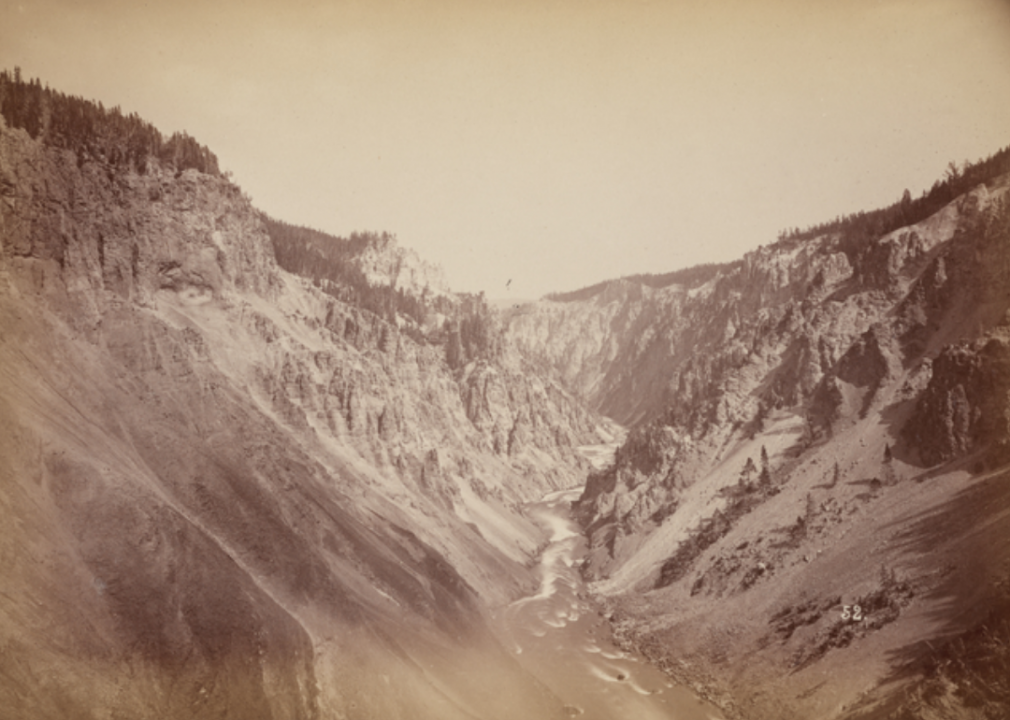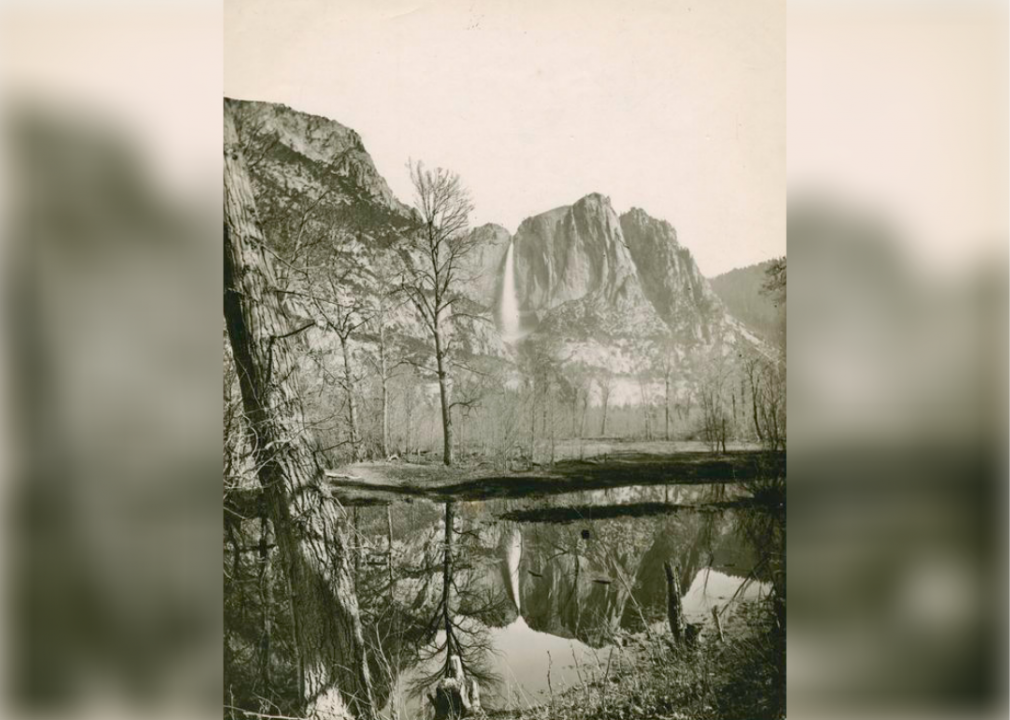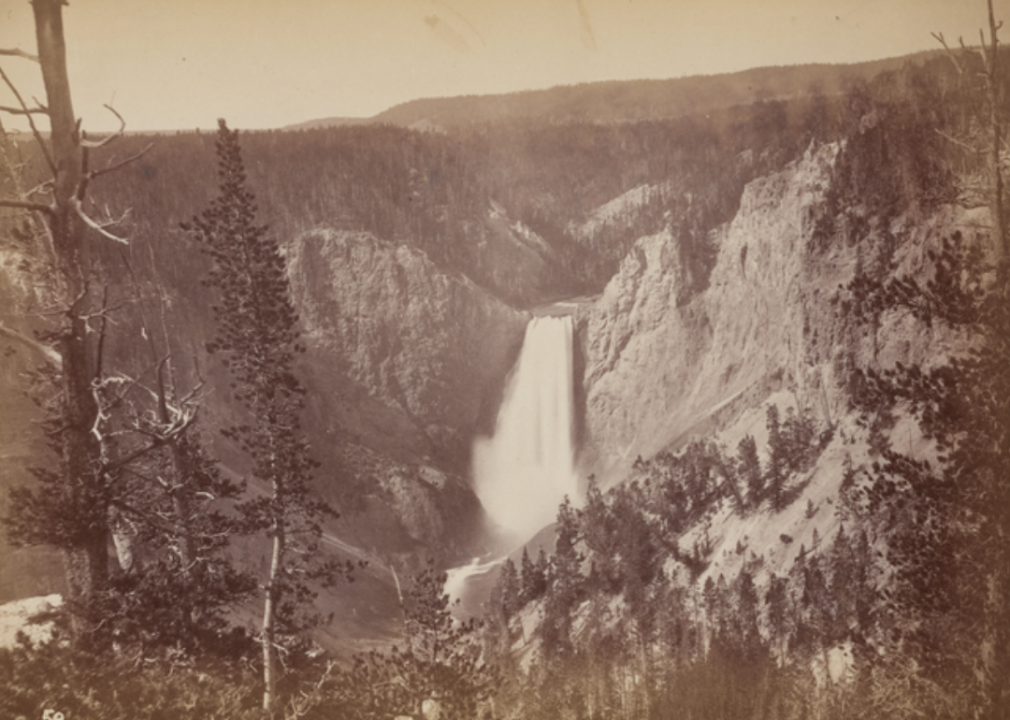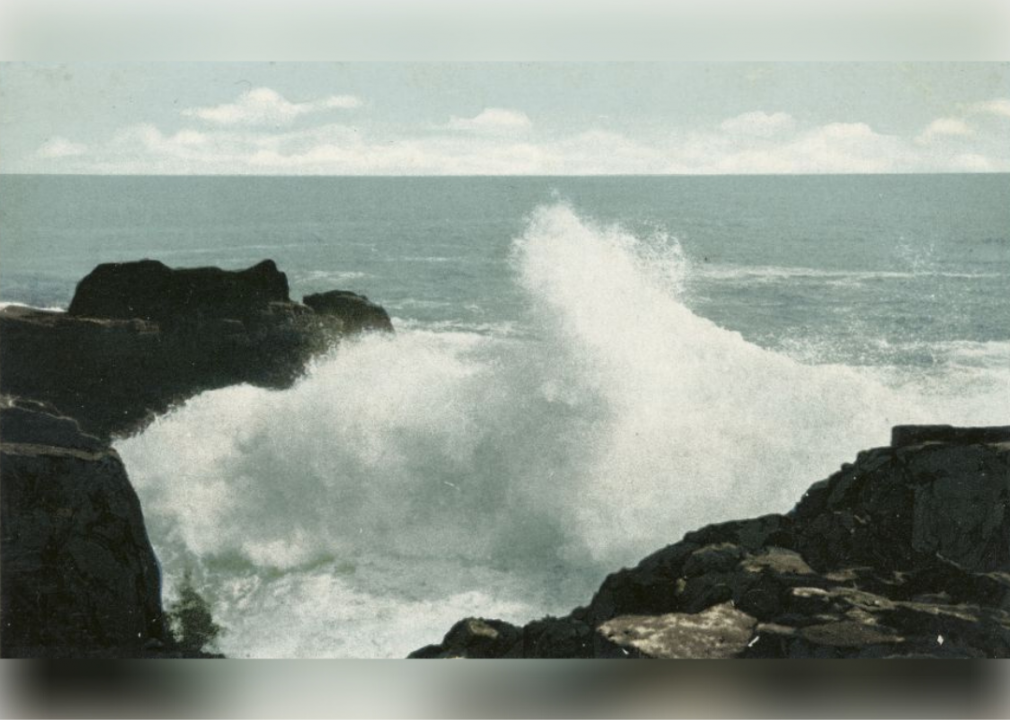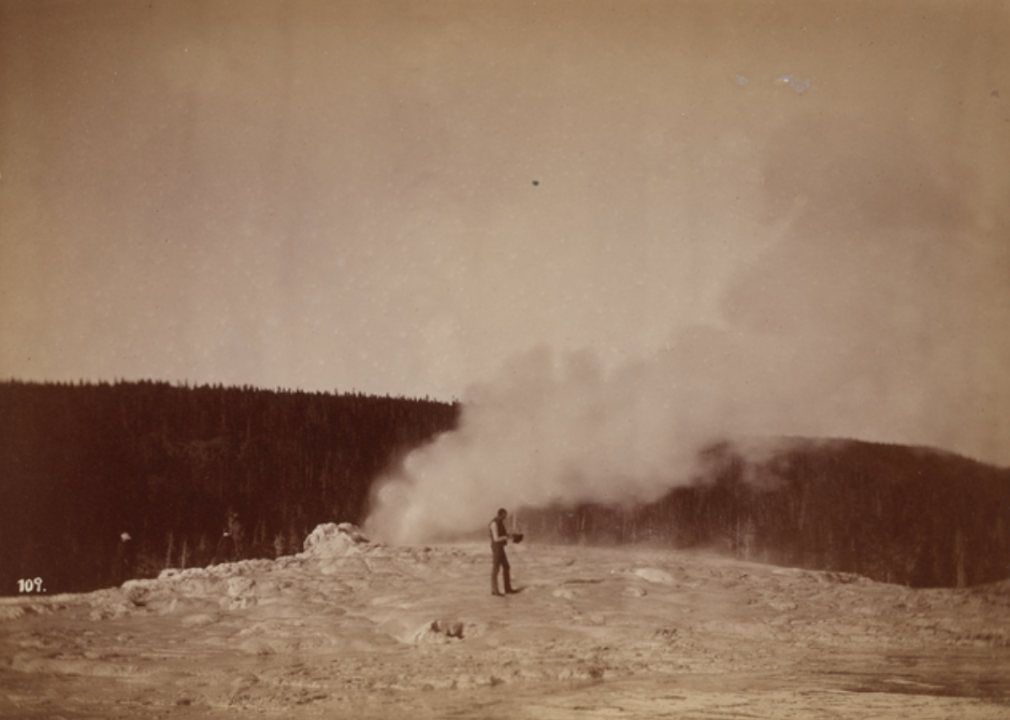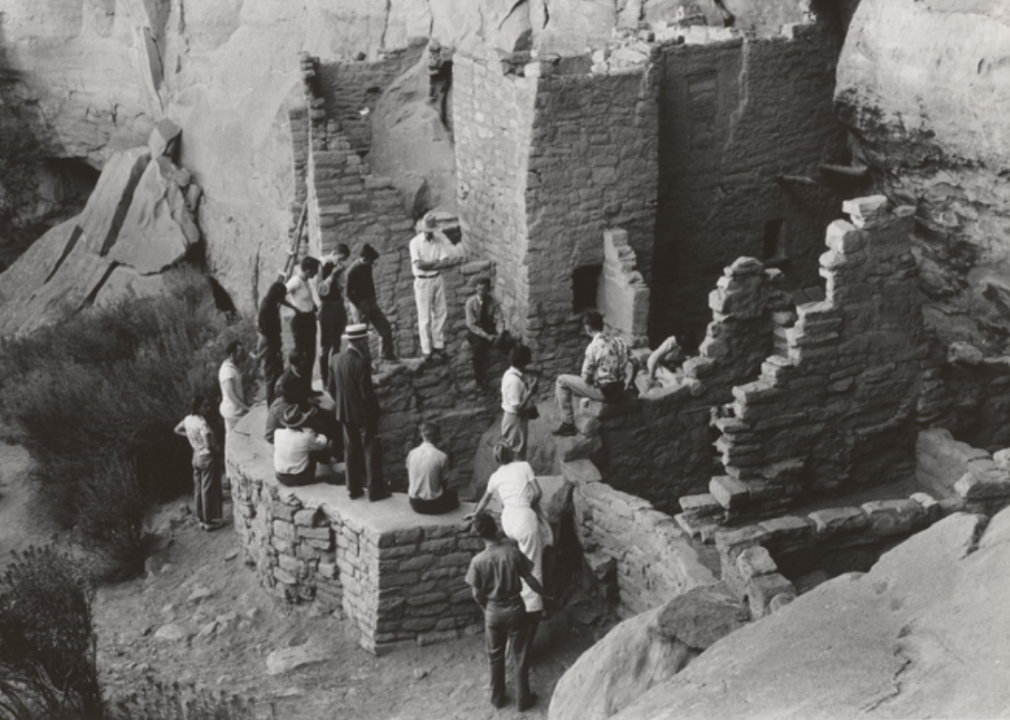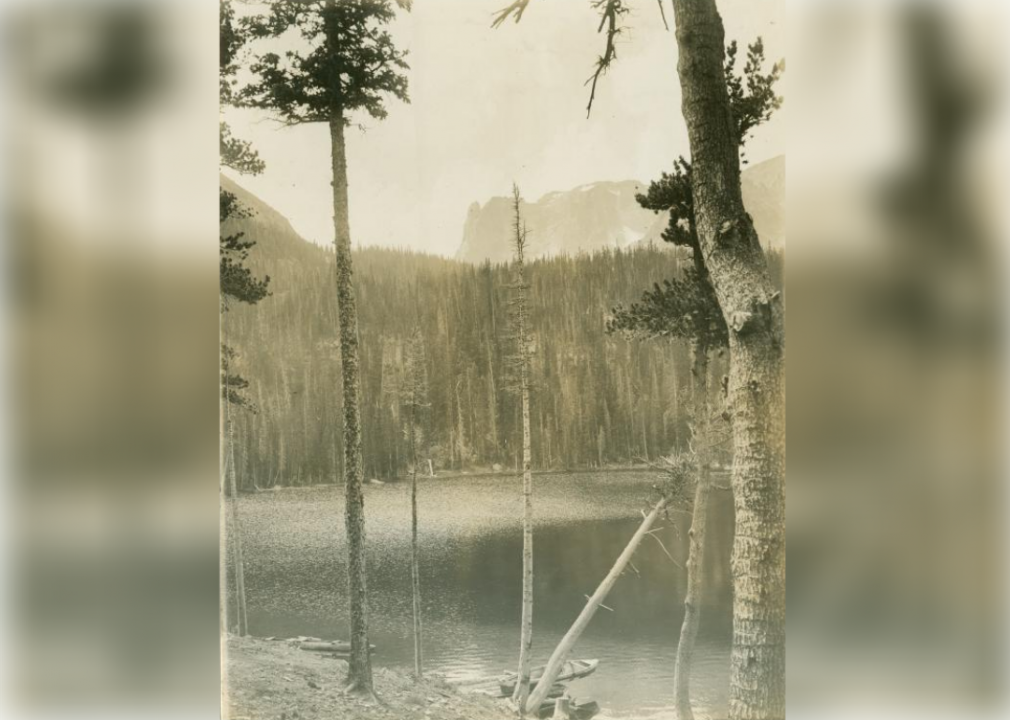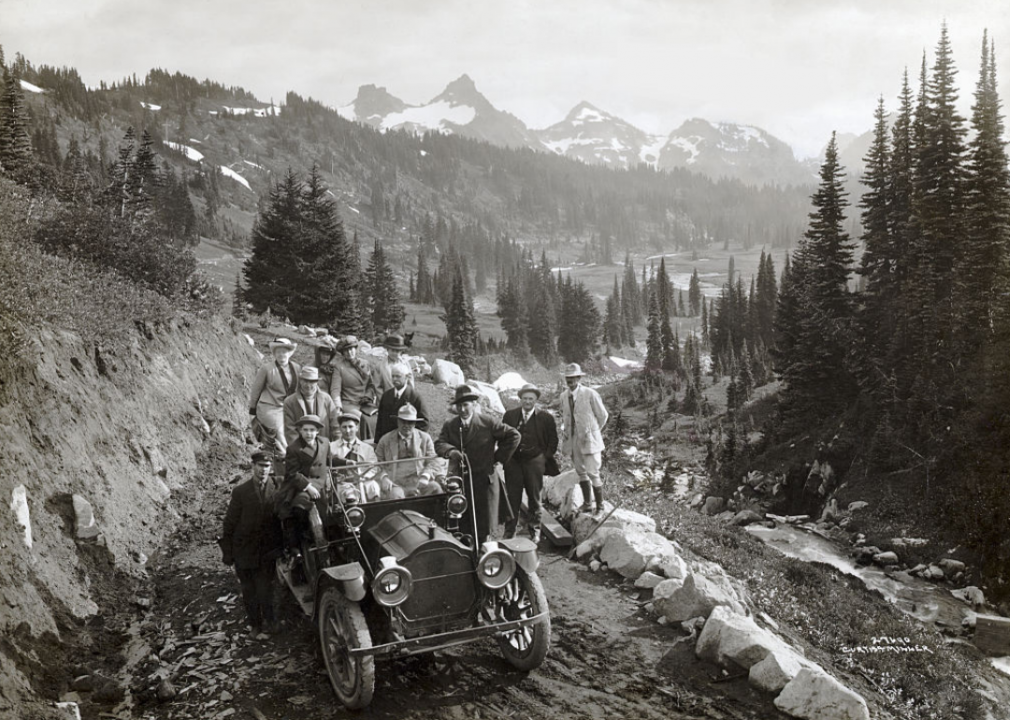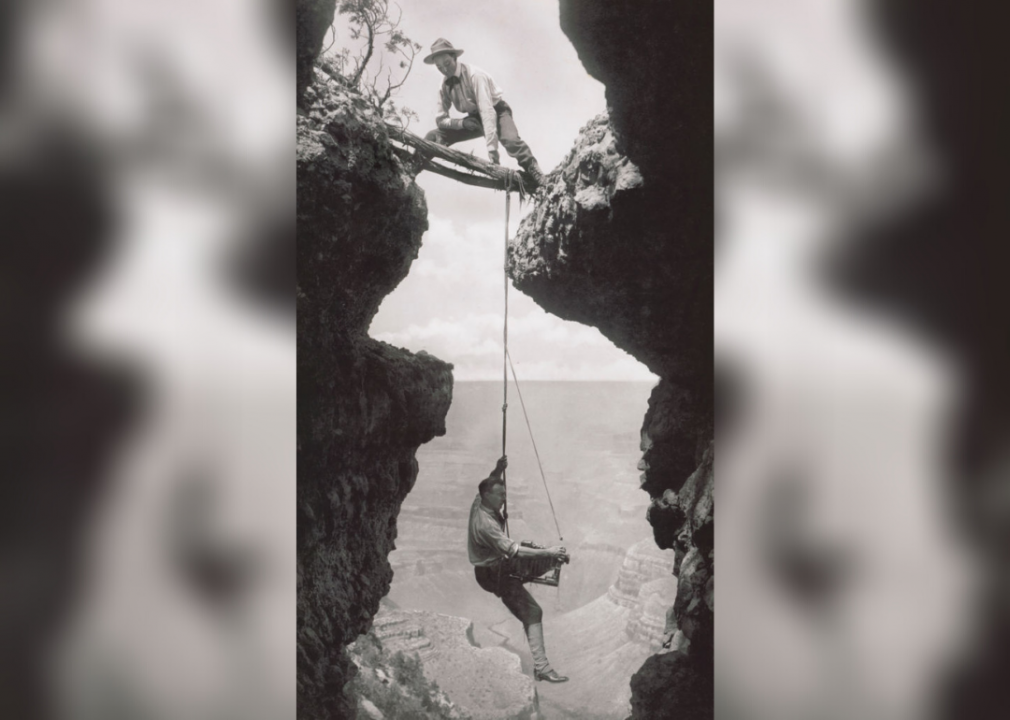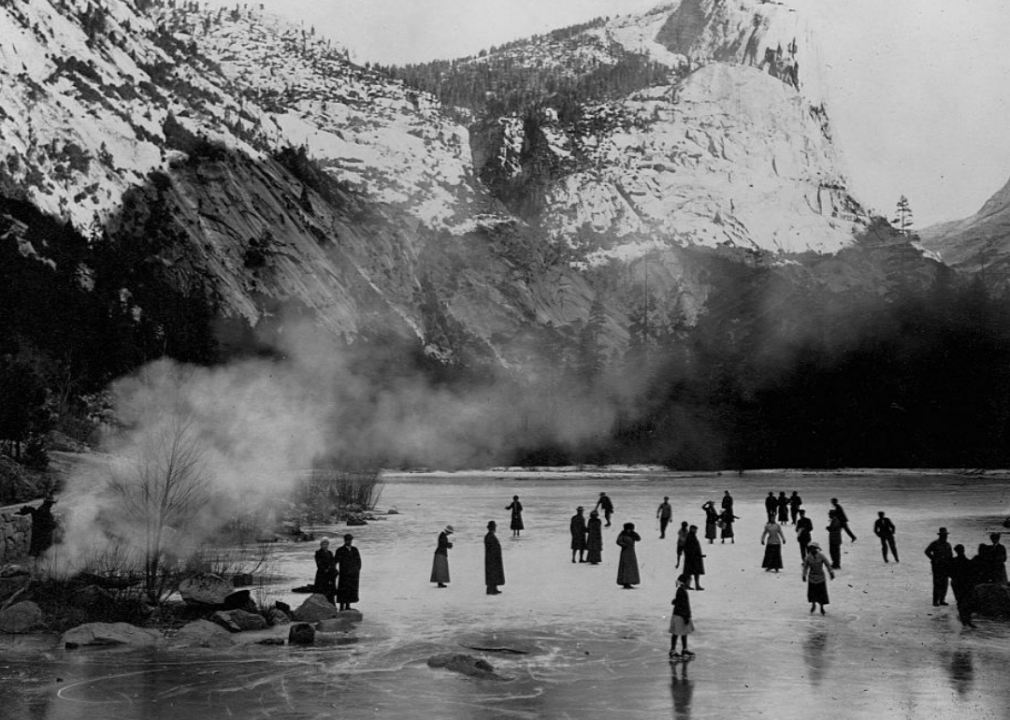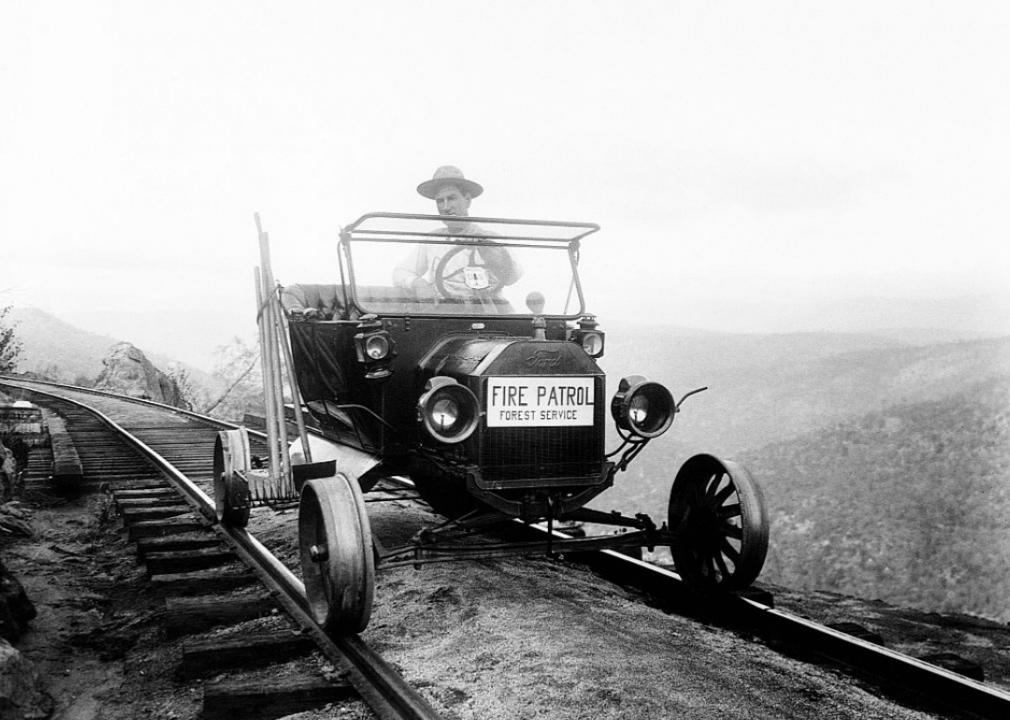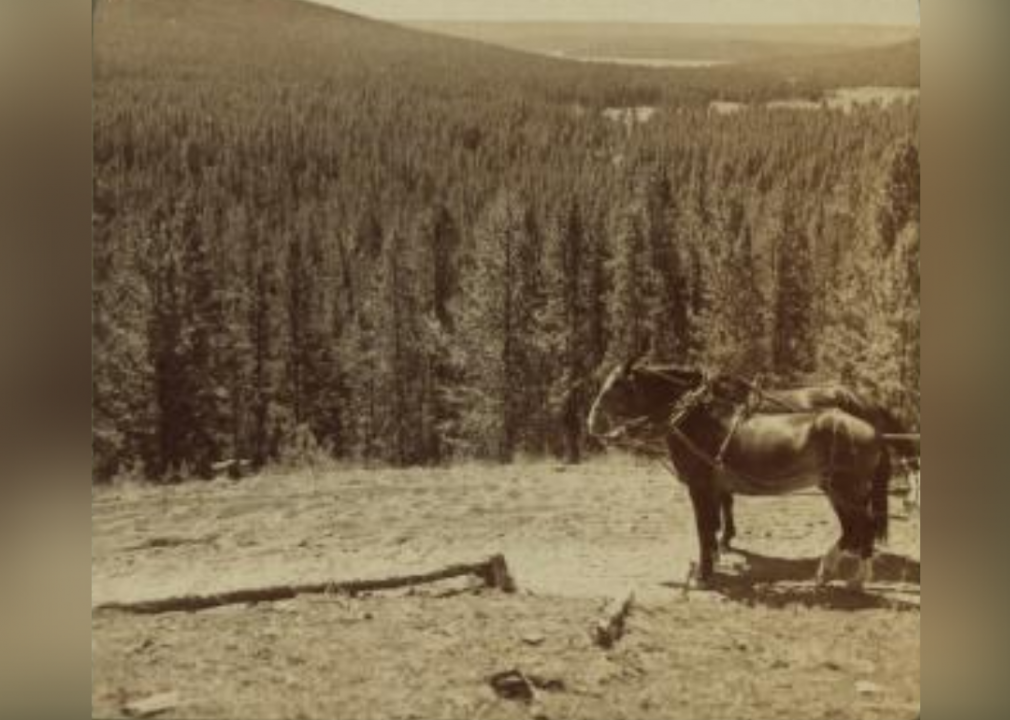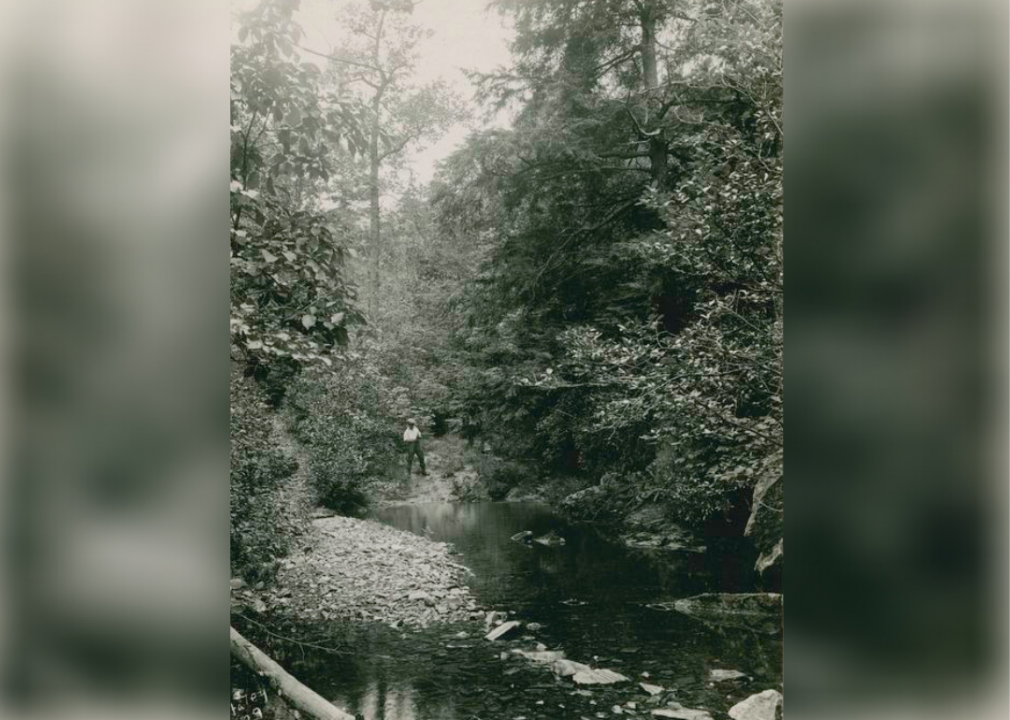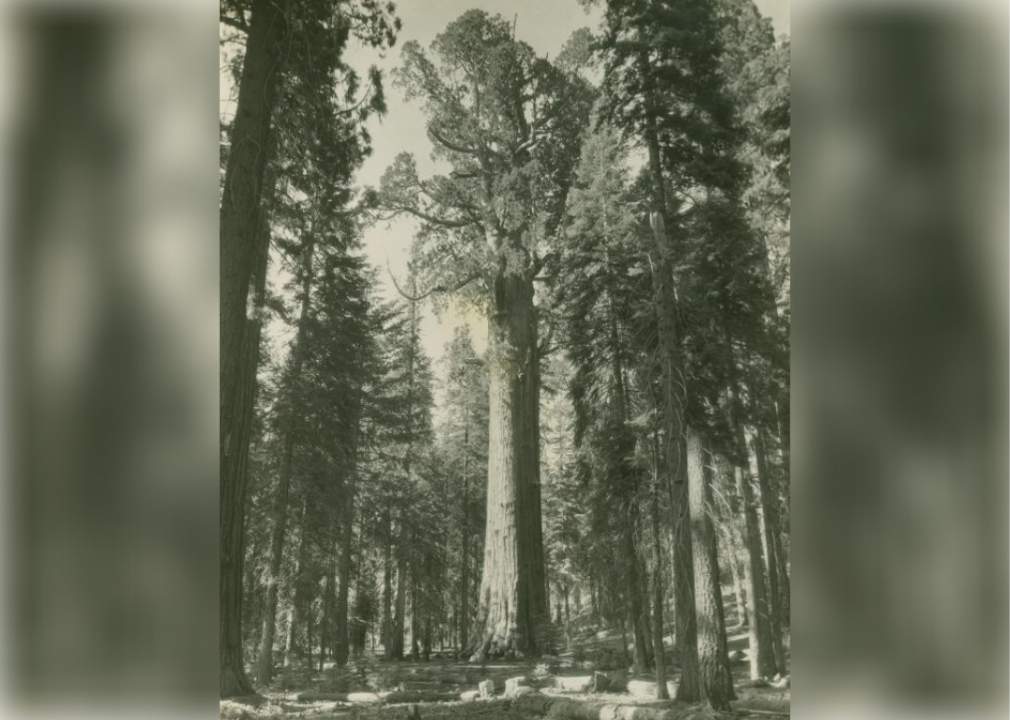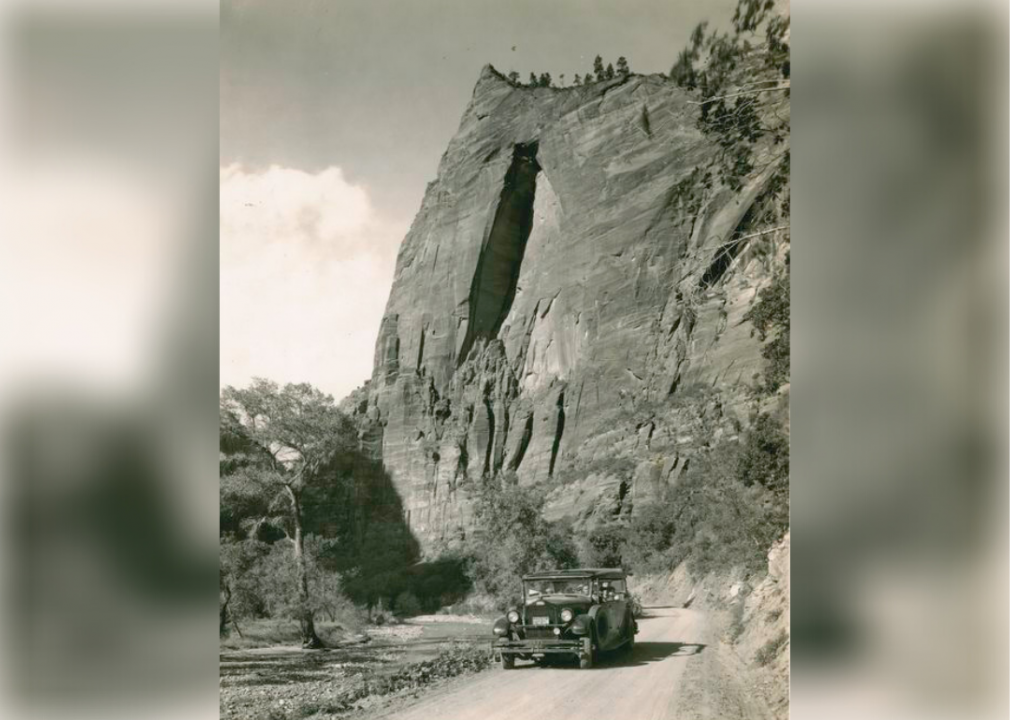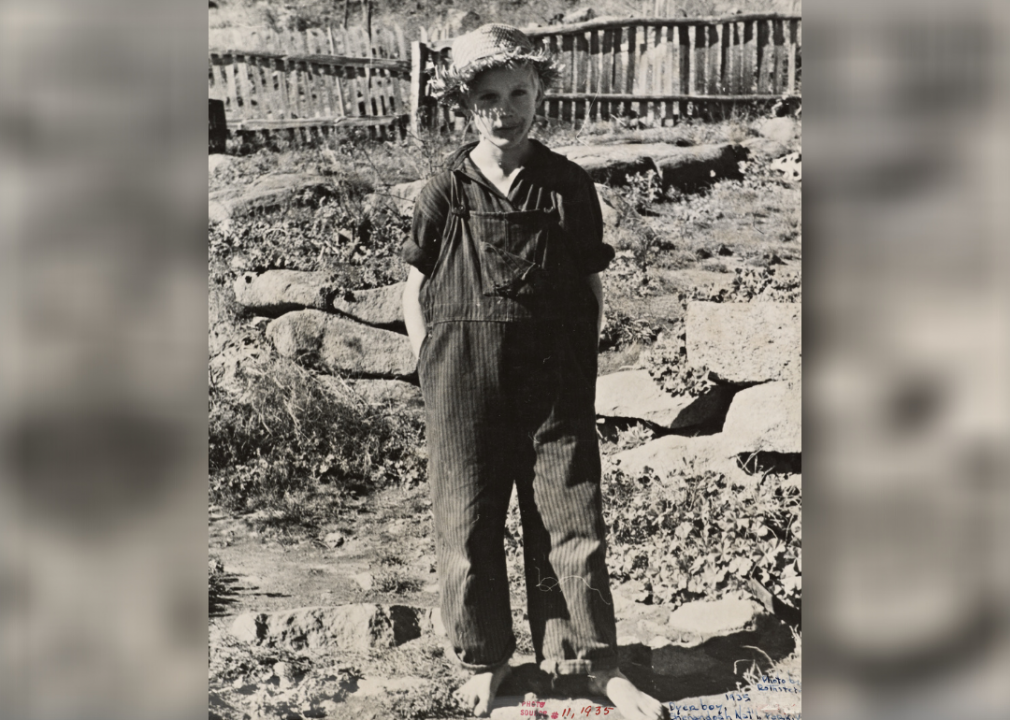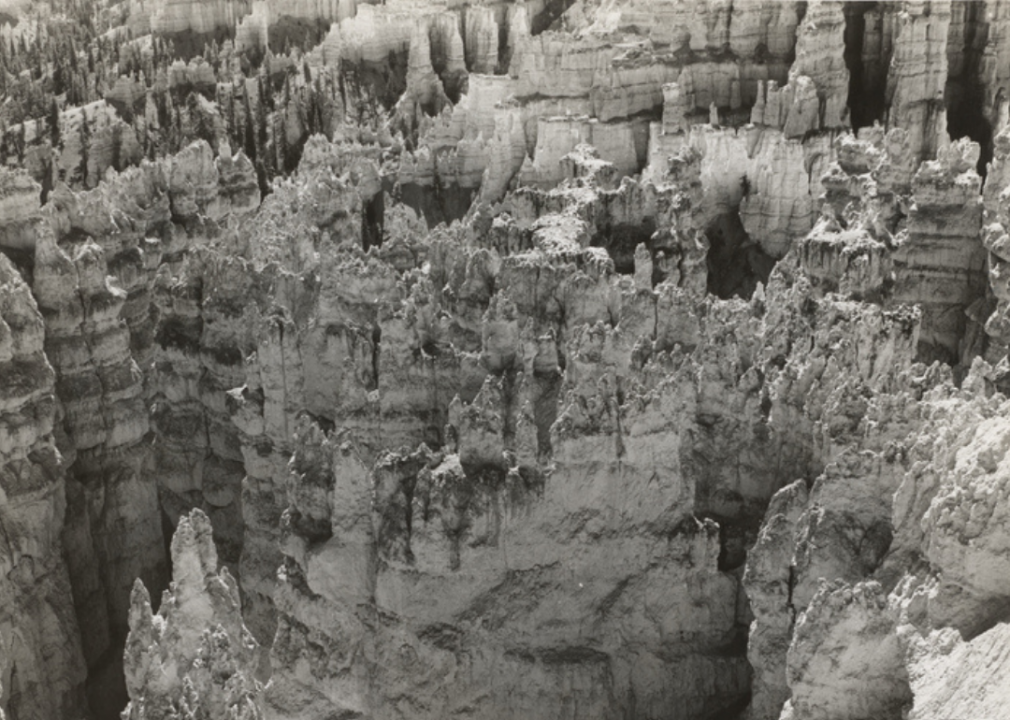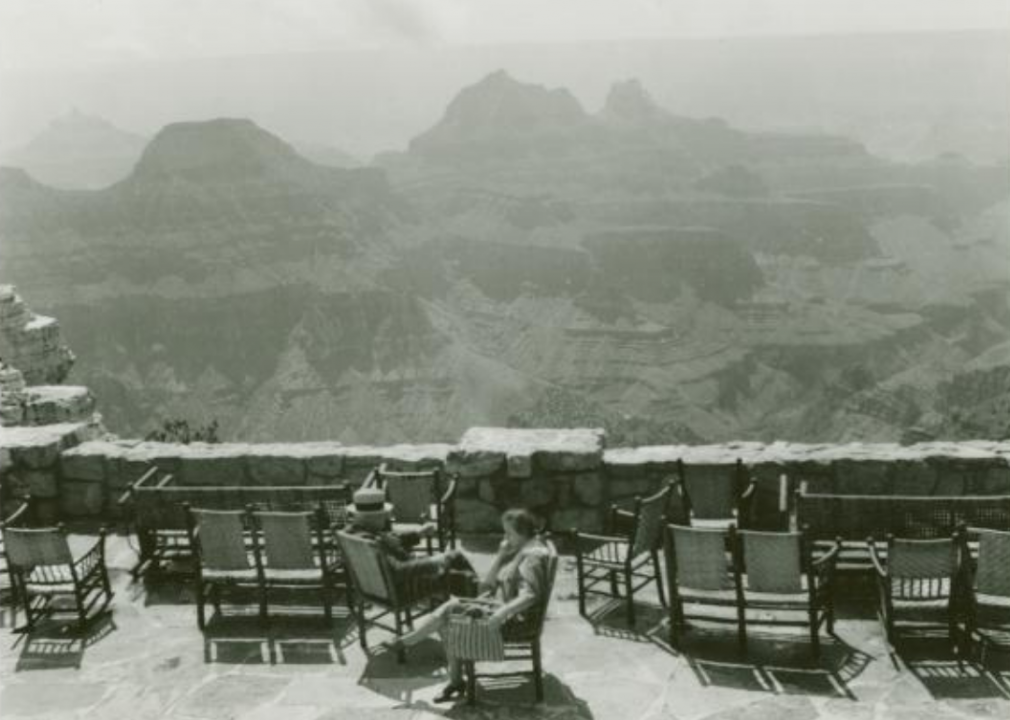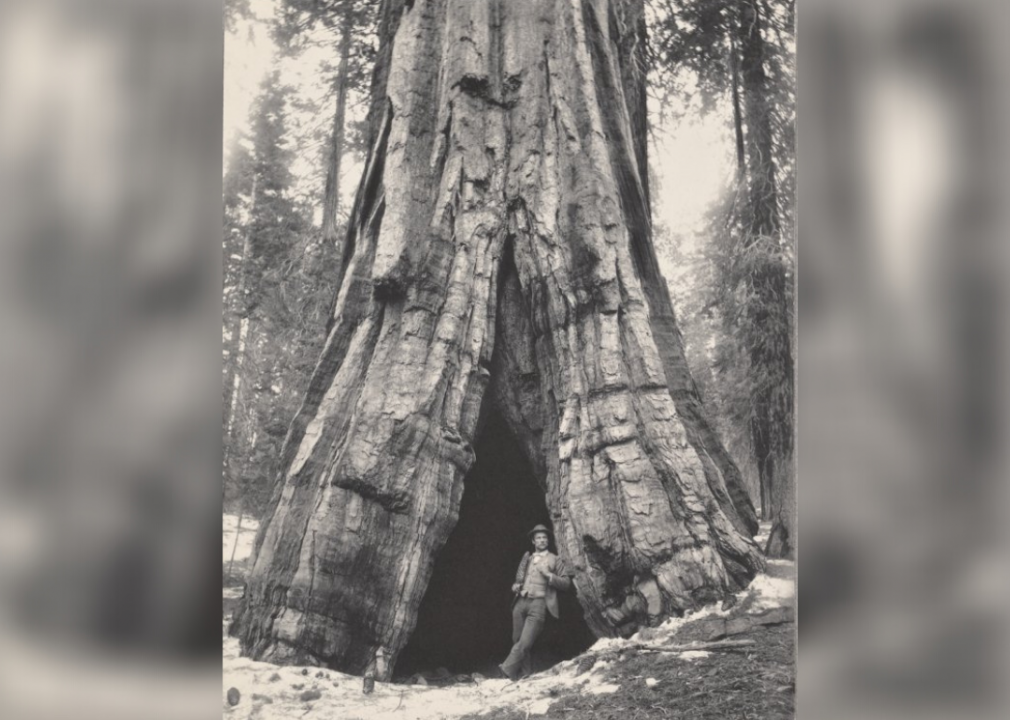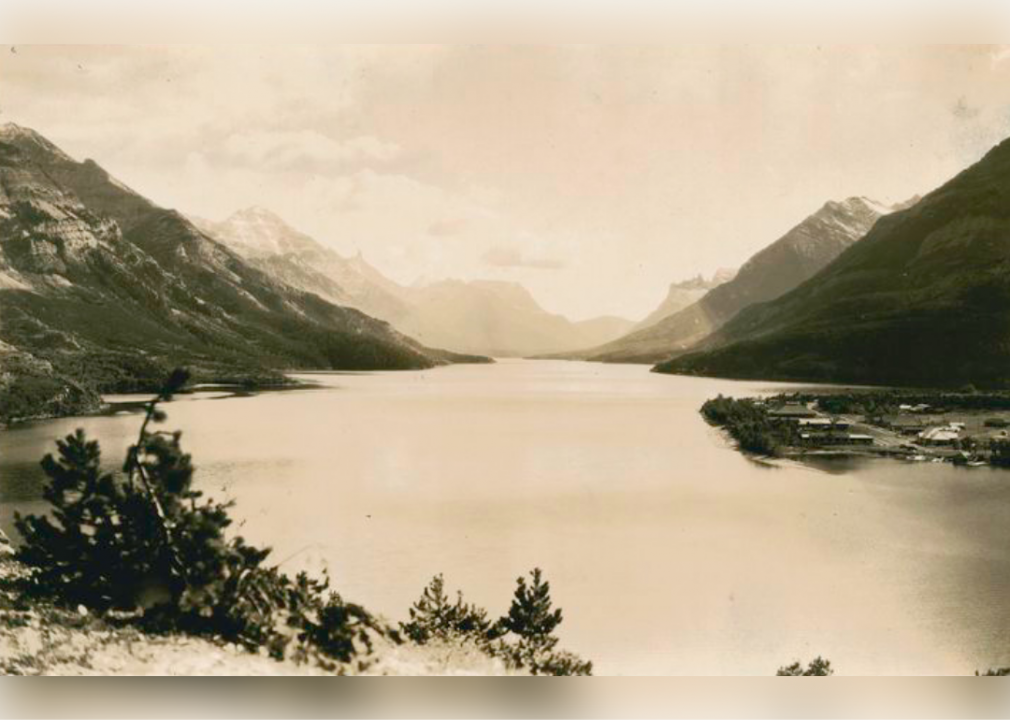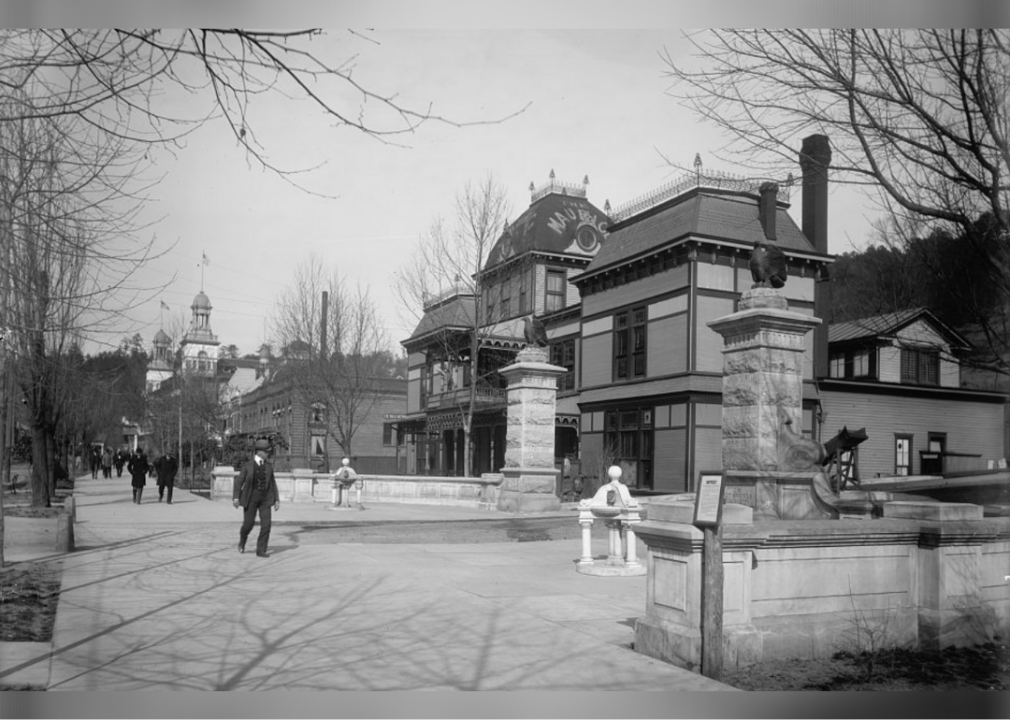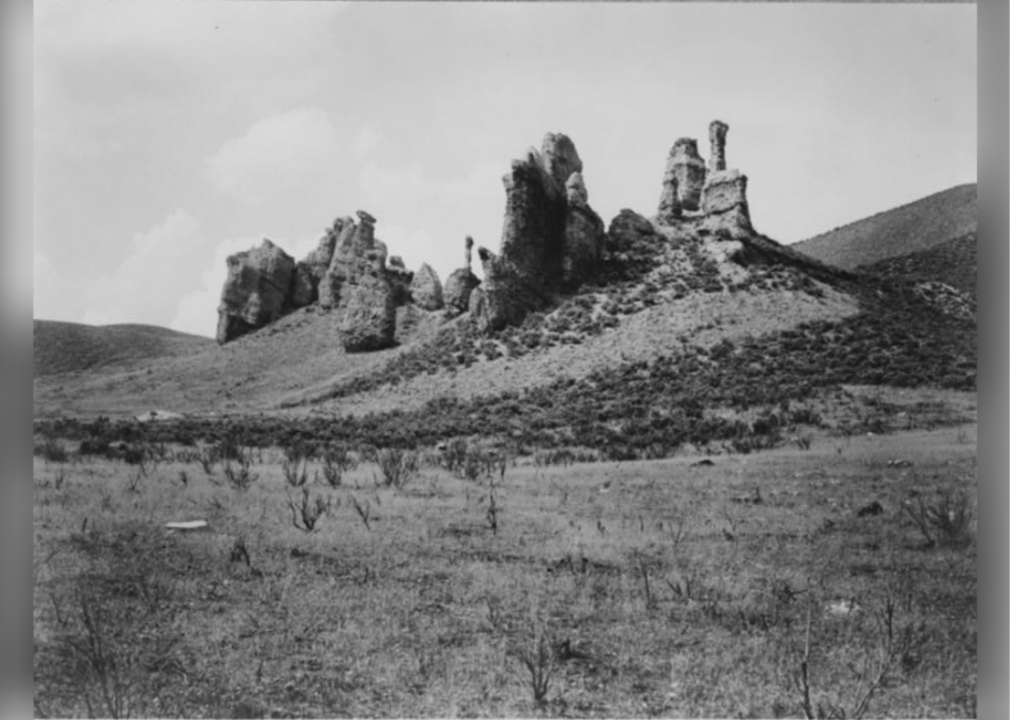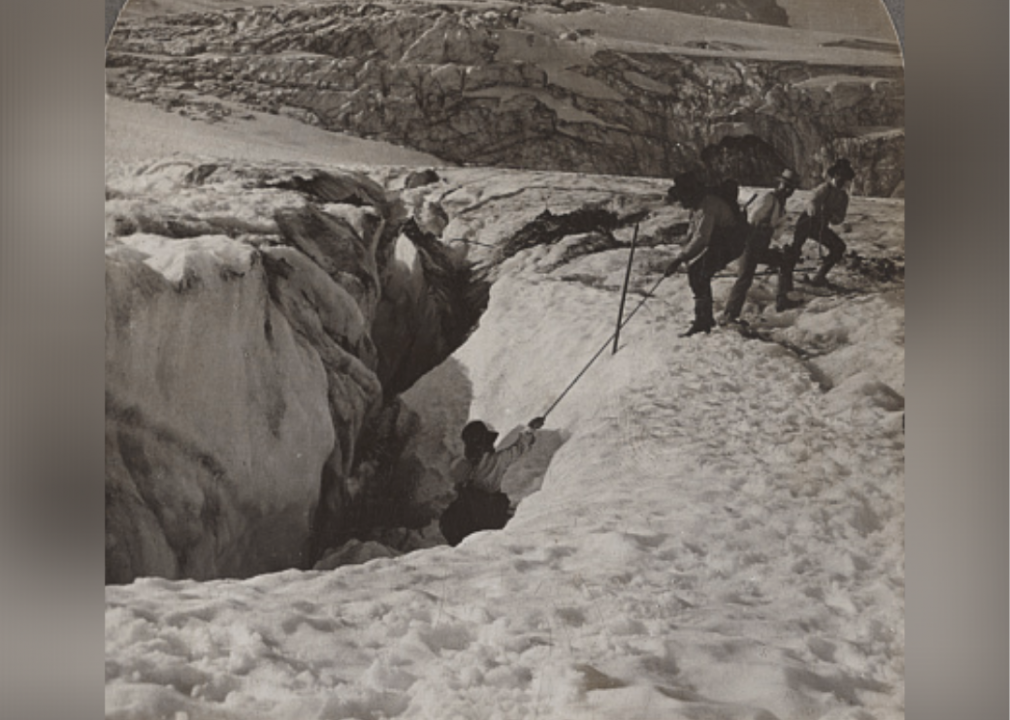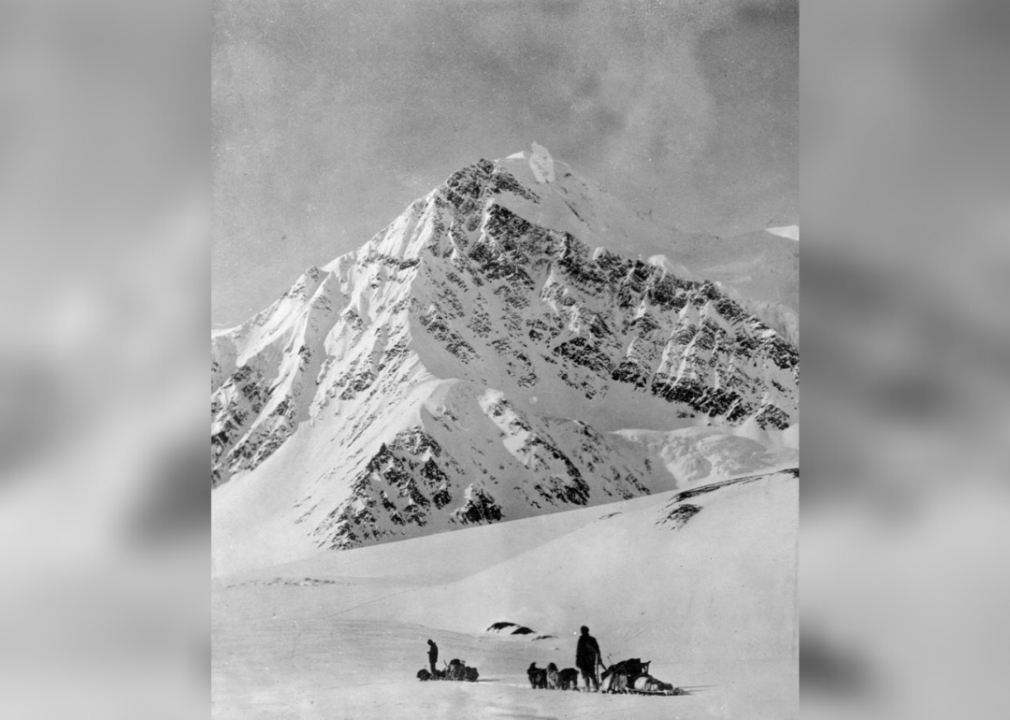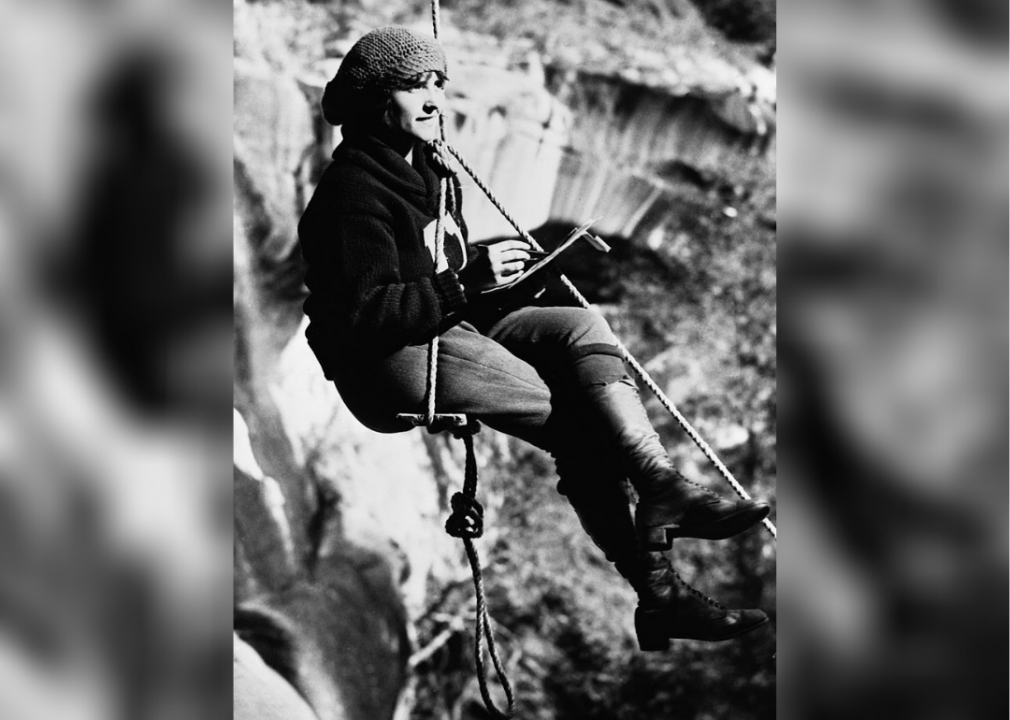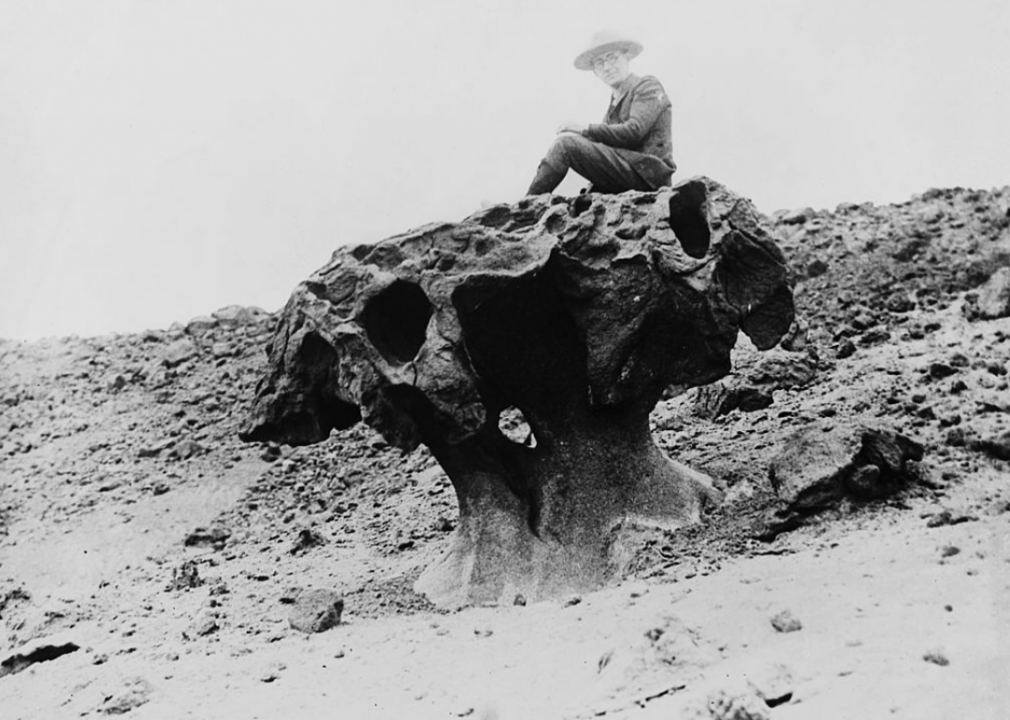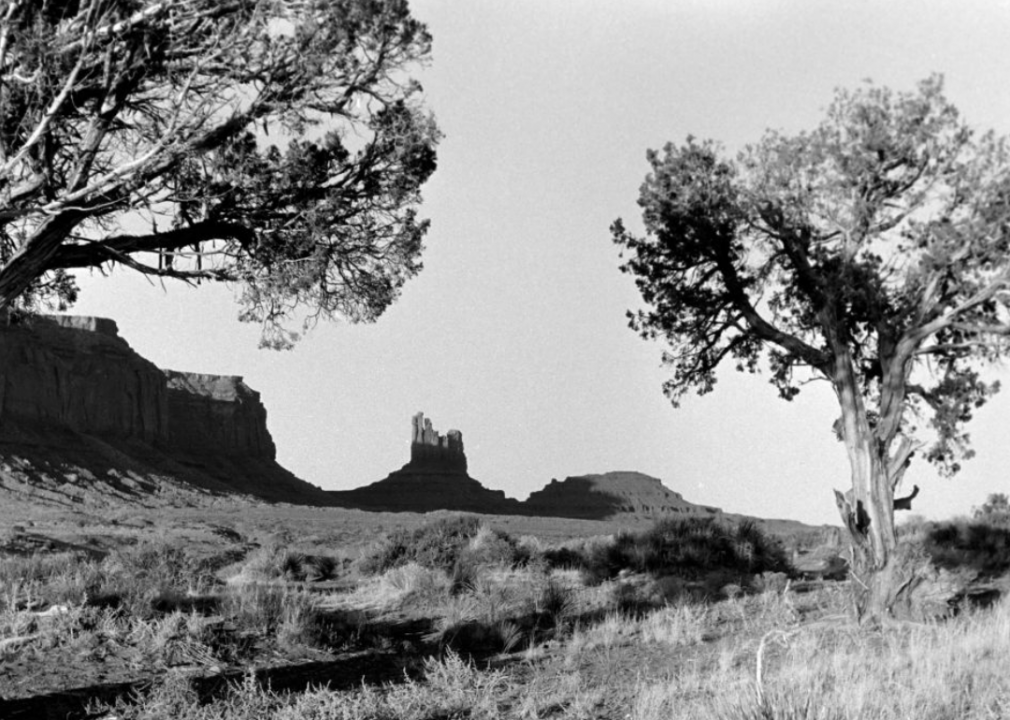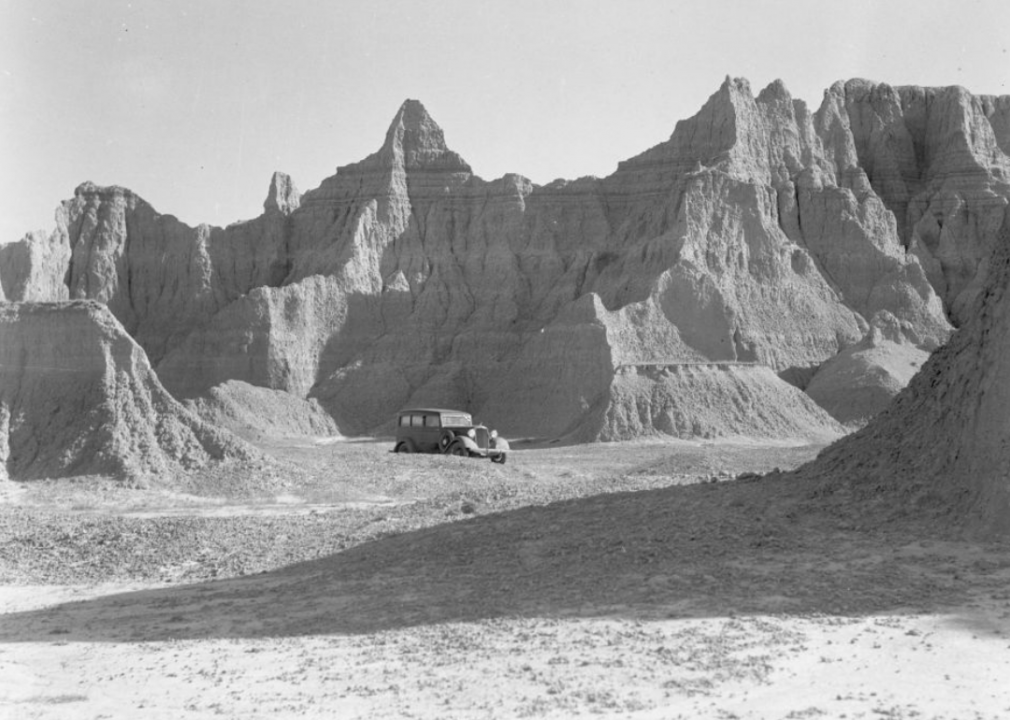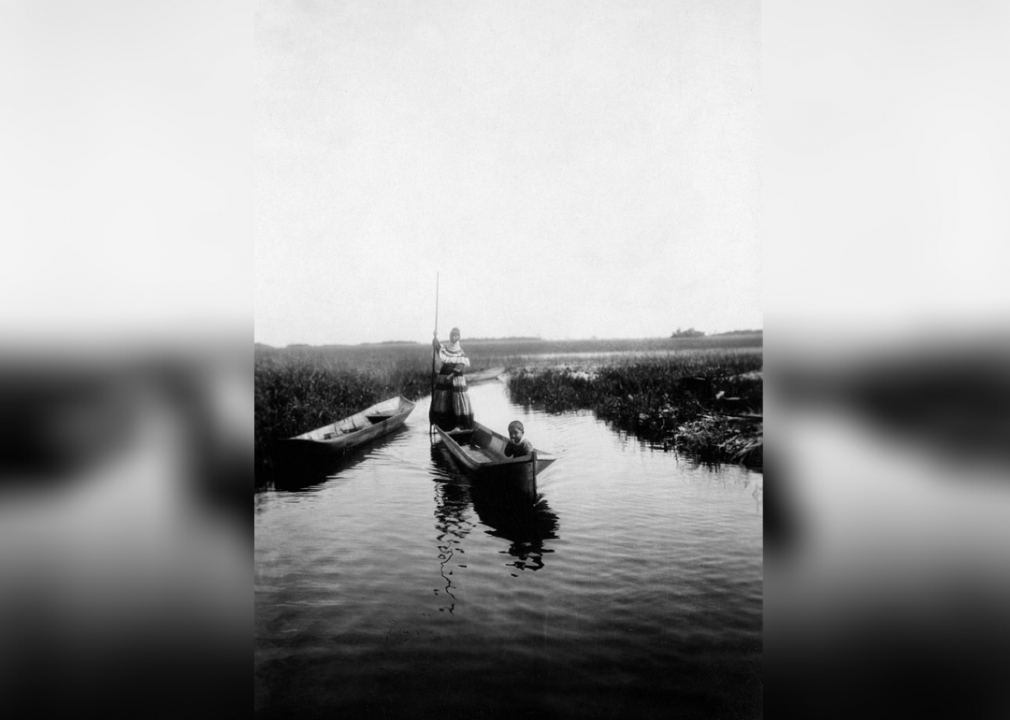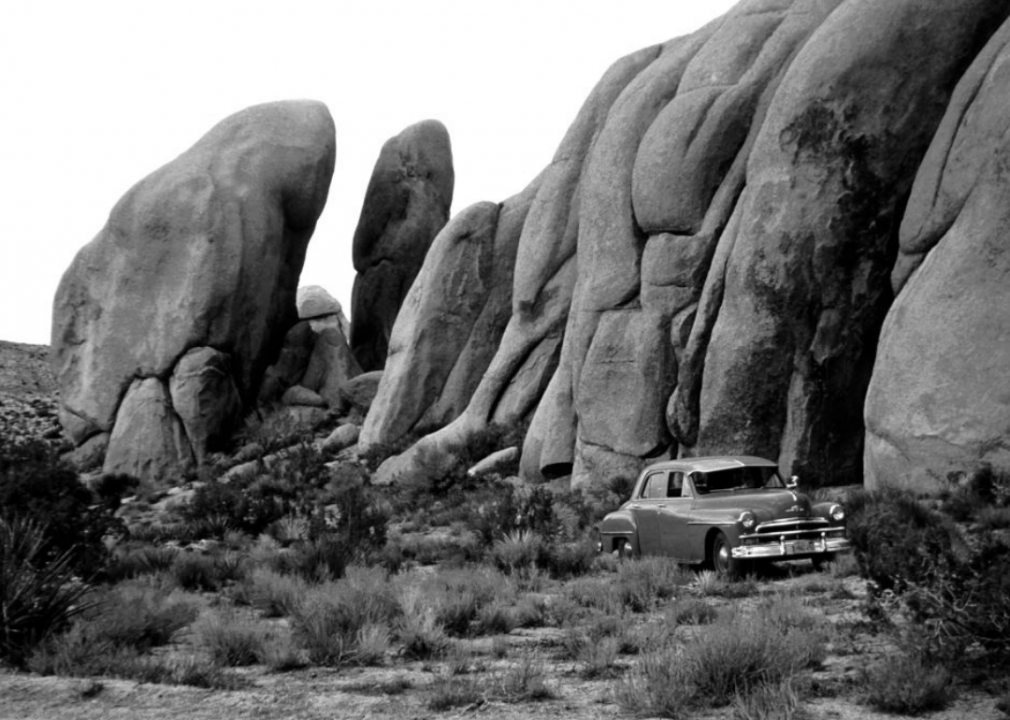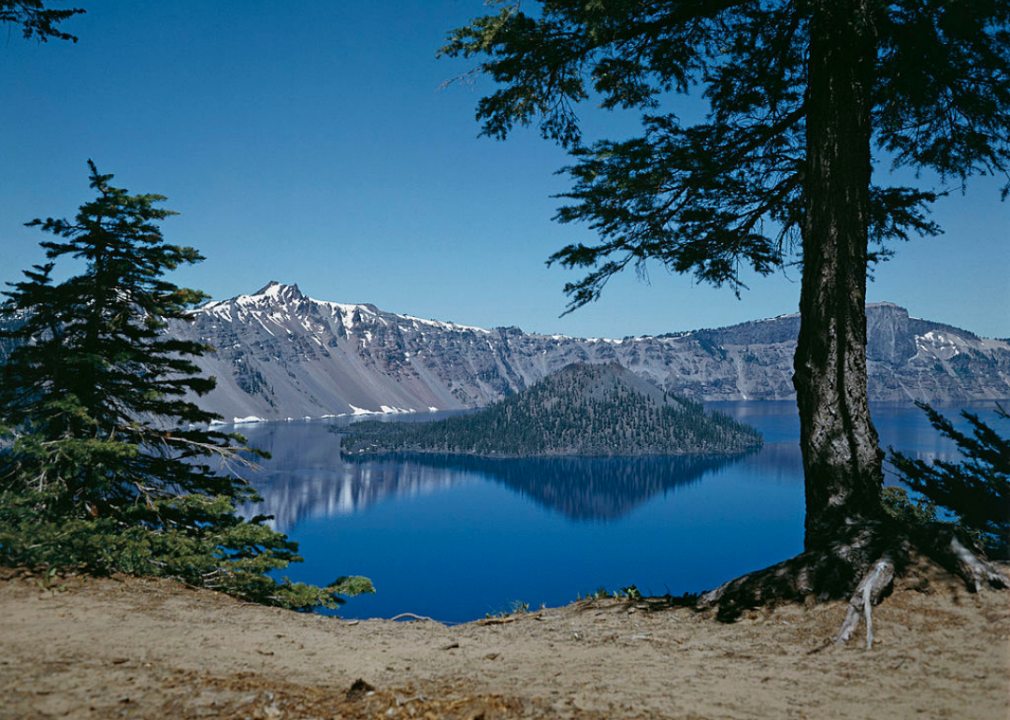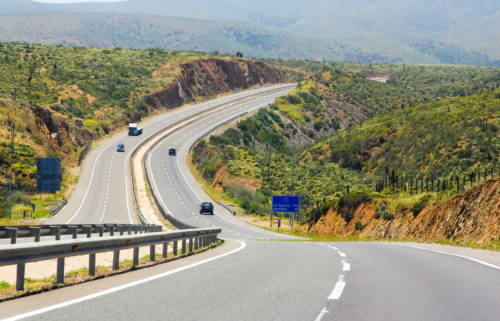Vintage photos that show the beauty of America’s national parks
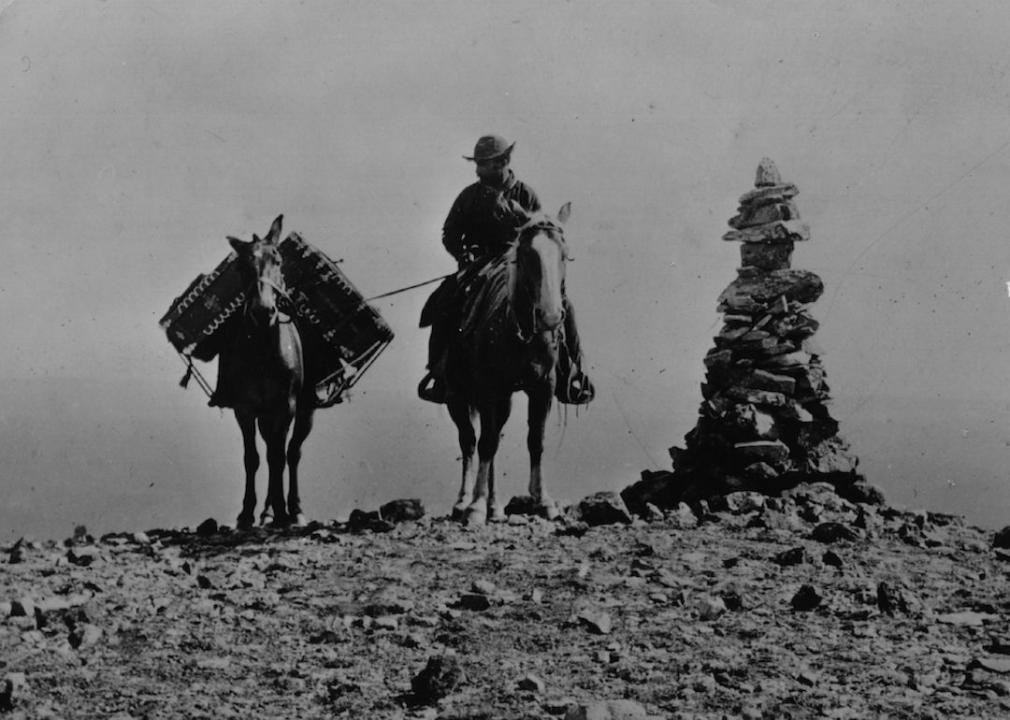
Hulton Archive // Getty Images
Vintage photos that show the beauty of America’s national parks
Photographer W H Jackson carrying his photographic equipment on horseback to the summit of Mount Washburn, Yellowstone National Park, circa 1870.
America’s national parks have a storied history that rivals their stunning beauty. The formations in these lands range from windswept caves and river-forged valleys, to savage coastlines and some of the world’s highest peaks. There are glaciers and deserts, and a myriad of flora and fauna that thrive amidst these wild expanses of Earth.
Stacker compiled a list of 50 vintage photographs that show the magic of these areas and the wonders which greeted early American explorers. Stretching from sea to shining sea, America’s national parks have been protected through a series of laws, which ensure they will be available for all future generations to enjoy. Though easily accessible in the modern age of fast-paced transport, many of these wild lands were only accessible by foot when early explorers discovered their natural wonders.
Beginning with the Yosemite Valley Grant Act, signed by Abraham Lincoln on June 30, 1864, the Yosemite Valley and surrounding lands became the first federally protected area. Yellowstone became the first national park in 1872, although the National Park Service was not officially created to manage and care for this slowly growing series of vast land tracts until 1916.
Due to the work done by early conservationists, the need to protect these natural areas was emphasized as a priority throughout the late 1800s and early 1900s. Legendary naturalists and explorers, such as John Muir and President Franklin Delano Roosevelt, were influential in keeping the resources contained within these parks from being consumed by the growth of America’s industrial age.
Today these parks are located throughout the country in 25 states and the U.S. Virgin Islands. The land encompassing them was either purchased or donated, though much of it had been inhabited by native people for thousands of years before the founding of the United States. These areas are protected and revered as educational resources about the natural world, and as spaces for exploration.
Continue scrolling for 50 vintage photos that show the beauty of America’s national parks.
You may also like: Most photogenic spots in every state
![]()
Sepia Times // Getty Images
Washington Column
Benjamin West Kilburn enjoys a tranquil scene in the Yosemite Valley circa 1870. This was 20 years before the valley and surrounding lands became the nation’s third national park.
Smith Collection/Gado // Getty Images
First boat on Yellowstone Lake
Two men set out on Yellowstone Lake in a boat named The Annie. The image was captured in 1871, just a year before Yellowstone became America’s first national park.
Genthe, Arnold // Library of Congress
Travel views of Yosemite National Park
A young woman ties her horse up for a rest with Yosemite’s iconic, snowcapped, mountainscape in the background in the early 1900s.
Genthe, Arnold // Library of Congress
Grand Canyon, Arizona
Around the start of the century, this image shows a man gazing over the Grand Canyon before the park went from being a national monument to an established national park in 1919.
Genthe, Arnold // Library of Congress
Petrified Forest
Petrified Forest National Park in Arizona is home to fossilized trees made up of almost solid quartz. This natural process of turning trees into stone occurred over millions of years.
You may also like: Least visited destinations in the world
Underwood & Underwood // New York Public Library
Grinnell Glacier
George Grinnell and his wife, Elizabeth, on a glacier named after them. Mr. Grinnell was an influential historian, conservationist, and naturalist, who helped map the West while working to advocate for Indigenous people.
Colorado Association // New York Public Library
Lake Nanita
Located in Rocky Mountain National Park, Lake Nanita is the largest body of water in the park. It’s situated between Longs Peak and Grand Lake.
Kiser, Fred H. // New York Public Library
Saint Mary Lake
Jagged mountains surround Saint Mary Lake in Montana’s Glacier National Park. Pictured across the lake is Goat Mountain.
Curtis, C. C. (Charles Clifford) // New York Public Library
Mark Twain log
Known as the “Mark Twain Tree,” this giant sequoia was cut down in 1891 in what later became Kings Canyon National Park. The trunk was sent to New York and London to be displayed in museums.
Corbis Historical // Getty Images
Sketching cliff dwellings
A worker sketches the Navajo area, White House Ruin, during the Wheeler Survey, which was run by Lt. George Wheeler. The survey took 15 years at a cost of $2.5 million.
You may also like: Reasons behind State Department travel warnings for 25 countries
MPI // Getty Images
Photographing falls
William Henry Jackson photographs Yosemite Falls from Glacier Point in California. Yosemite Falls is one of the world’s largest waterfalls, dropping a total of 2,425 feet.
Hulton Deutsch // Getty Images
Driving through a tree
A group travels by horse-drawn carriage through a giant sequoia tree. Sequoias are some of the largest trees in the world and can live for over 3,000 years.
Hulton Archive // Getty Images
Steamer queen
Glacier Bay National Park of Alaska contains 3.3 million acres and includes fjords, glaciers, and temperate rainforests. It is one of the vastest conservation areas on the globe.
Corbis Historical // Getty Images
Muir Glacier
John Muir became one of Glacier Bay National Park’s earliest advocates during his travels there to study glaciology. He noted early on that Yosemite may have been created by these same massive ice sheets.
Corbis Historical // Getty Images
President Roosevelt at Yosemite
On a three-day exploration led by Muir, President Theodore Roosevelt explored the Yosemite Valley and Mariposa Grove. Roosevelt was instrumental in early projects to conserve land for national parks.
You may also like: The 50 best beach towns to live in
Corbis Historical // Getty Images
Tourists in Yellowstone National Park
Two visitors drive along a raging river in Yellowstone National Park. Humans have been exploring this area from as far back as 11,000 years ago.
PhotoQuest // Getty Images
Roosevelt and Muir
A group of explorers, including conservationist John Muir and President Theodore Roosevelt, hiked among Yosemite Valley’s redwood trees. On the valley and trees, President Roosevelt remarked, “There can be nothing in the world more beautiful than the Yosemite, the groves of the giant sequoias and redwoods…”
Edward S. Curtis // Getty Images
In the Badlands
Pictured amidst the Pine Ridge Reservation, Native Americans ride on horseback through the Badlands in South Dakota. The area has been inhabited by tribes including the Lakota and Arikara for nearly 11,000 years.
Ingersoll, T.W. (Truman Ward) // New York Public Library
Yellowstone River through the Grand Canyon
The Yellowstone River flows through the Grand Canyon. European explorers first set eyes on the canyon in 1540.
Galloway, Ewing // New York Public Library
Yosemite Falls, Yosemite National Park
Yosemite Falls is the largest of numerous waterfalls in the park. The falls all experience increased flow during the spring and early summer when snowmelt is at its peak.
You may also like: What 50 top tourist destinations looked like 50 years ago
Ingersoll, T. W. (Truman Ward) // New York Public Library
Grand Falls of Yellowstone River from Point Lookout, 360 feet high
The Grand Falls of Yellowstone flows into the Grand Canyon of Yellowstone. Geologists believe the park was formed some 140,000 to 160,000 years ago after a volcanic eruption about 640,000 years before.
Smith Collection/Gado // Getty Images
Sea waves crashing against rocks
Waves crash into Thunder Hole on Mount Desert Island in Maine’s Acadia National Park. Acadia was the first designated national park east of the Mississippi River.
Ingersoll, T. W. (Truman Ward) // New York Public Library
Old Faithful Geyser Cone, steaming
A lone explorer stands beside Old Faithful in Yellowstone National Park in the late 1800s. Today, the regular eruptions can be viewed from anywhere on the park’s live stream.
Lee, Russell // New York Public Library
Tourists at cliff dwellings
A group of tourists explores Pueblo homes built into the cliffs at Mesa Verde National Park in Colorado. The park was created in 1906 in order to preserve the homes of the ancestral people who lived there for 700 years.
United States. National Park Service // New York Public Library
Fern Lake
Located in Rocky Mountain National Park in Colorado, Fern Lake is one of many stops on the Fern Lake Trail. Shown here is an early explorer’s boat tied up lakeside dating between the late 1800s and the early 1900s.
You may also like: World’s happiest countries
Bettmann
Franklin Lane with group at Mount Rainier
Franklin Lane, secretary of the interior, was also a conservationist and influential political adviser. Here he travels with a group to explore the sites around Mount Rainier National Park in Washington State.
Universal History Archive // Getty Images
Photographing canyon wall
With one hanging from the rope and the other holding it, brothers Emery and Ellsworth Kolb precariously photograph a section of the Grand Canyon wall. The duo started a successful photography business based in the region, which allowed them to continue exploring.
Corbis Historical // Getty Images
Ice skaters at Yosemite National Park
Visitors to Yosemite National Park enjoy skating on a frozen lake in the early 1900s. The vast, protected park has a land mass comparable to the size of Rhode Island.
Corbis Historical
Ranger driving car on railroad
Affixed with railroad wheels, this specially designed Ford carried rangers like C.K. Jordan, shown here on a forest fire watch in the Northern California wilderness.
Underwood & Underwood
Continental Divide over Shoshone Lake
This westward view shows Shoshone Lake from the Continental Divide. The Continental Divide Trail, which traverses the lands from Mexico to Canada, was first forged by Indigenous peoples long before the land became a protected section of the American West.
You may also like: Famous tourist destinations being impacted by climate change
Staley, Harry // New York Public Library
Shenandoah National Park, Virginia
An early modern explorer is shown here in Shenandoah National Park located in Virginia. The park was first inhabited some 8,000 years ago by Native Americans who used the land to hunt and gather food, and create tools for consumption and trade.
Unknown // New York Public Library
General Sherman Tree, Sequoia National Park, California
Located in California’s Sequoia National Park, the General Sherman tree is the world’s largest tree (by volume) and is 275 feet tall. The base of the giant sequoia is over 36 feet in diameter. It was estimated that General Sherman was 2,000 years old in 2002.
Ewing Galloway // New York Public Library
Sandstone Cliffs in Zion National Park, Utah
Once utilized by native tribes 8,000 years ago to track giant sloths and mammoths, Zion Canyon was later settled by Mormon pioneers in the 1860s. Due to flash floods, early settlers faced great difficulty in the park as the sudden onslaught of raging waters could wash away entire towns.
You may also like: The best streaming services for sports in 2021
Rothstein, Arthur // New York Public Library
Corbin Hollow boy
This boy was one of many who were considered the “Hollow Folk” who lived in the Shenandoah National Park, seemingly cut off from modern society. They lived in cabins built of mud and logs, and were a fascination of anthropologists due to their alleged lack of religion, government, and social structure.
Lee, Russell // New York Public Library
Formations at Bryce Canyon
Consisting of 35,835 acres, Utah’s Bryce Canyon National Park contains some of the wildest and most jagged rock formations in the western United States. The land was home to various native tribes for thousands of years prior to it becoming part of the national park system.
You may also like: Must-do activities at every national park
Unknown // New York Public Library
Grand Canyon
Visitors to the Grand Canyon bask in the sun at the canyon’s edge in 1939. The park went from national monument to official national park status 20 years prior in 1919.
Dove, Adam // New York Public Library
Sequoia giganteum
A traveler stands inside the hollowed out trunk of a giant sequoia tree in the Mariposa Grove of Yosemite National Park. Giant sequoias like this one survive even the hottest of forest fires, which are a necessary part of the tree’s propagation. The heat allows their cones to open and release their seeds.
Hileman, T. J. // New York Public Library
Glacier National Park, Montana
Peaks rise in the distance over an alpine lake in Glacier National Park. The park straddles the Continental Divide, which explains its extreme weather patterns.
Detroit Publishing Co. // Library of Congress
Gate to government reservation, Hot Springs, Arkansas
The natural geological features of this area inspired the United States to protect the land in 1832. In 1921, five years after the formation of the National Park Service, the land was officially included as a national park.
National Photo Company Collection // Library of Congress
Estes National Park, Colorado
Towering rock formations dot the landscape in Estes, Colorado, an area that borders Rocky Mountain National Park. The protection of these lands were due in large part to the Estes Park Protective and Improvement Association, which worked to keep industry from disrupting this area of natural wonder.
You may also like: U.S. airports with the most delays
Photographs Division Washington, D.C. // Library of Congress
Cowlitz Glacier
A team of workers bands together to rescue a victim who has fallen into a crevasse in Rainier National Park on the Cowlitz Glacier. Flowing southeasterly off of Mount Rainier, the glacier consists of two parallel ice streams.
APIC // Getty Images
Mount McKinley
Dog sled teams rest in front of Mount McKinley, now called Denali, in Denali National Park in Alaska. It is the tallest mountain in North America, rising to over 20,000 feet.
Bettmann // Getty Images
Mountaineer sketching on rope swing
An early mountaineer sketches from a rope swing in Utah’s Zion National Park. The sport of mountaineering began to take hold in the United States in the early 1900s and advanced after World War II as new equipment began to be used to climb cracks in mountain facades.
Topical Press Agency // Getty Images
Death Valley Rock
An early visitor sits atop a unique stone formation in California’s Death Valley in 1930. Shortly after this time, President Roosevelt’s newly created Civilian Conservation Corps worked to develop the park infrastructure by building roads in order to make the land more accessible to visitors.
Hulton Archive // Getty Images
Arches National Park in Utah
Rock formations in the desert area known as Arches National Park. The park began as a national monument, designated by President Herbert Hoover in 1929, and was established by Congress as a national park in 1971.
You may also like: Top-rated museums in the U.S.
Corbis // Getty Images
Vehicle and Badlands geological formations
A car drives through the Badlands of South Dakota in August 1934. The land was once home to saber-toothed cats and rhinos.
ullstein bild // Getty Images
Seminole woman canoeing in the Everglades
A Seminole woman paddles with a child through the vast expanse of watery terrain now known as Everglades National Park. The Seminole tribe fought to keep its land out of the hands of American settlers during a series of wars in the 1800s.
You may also like: The best streaming services in 2021
Robert Alexander // Getty Images
Summer vacation in the 1950s
Beside a rock formation is a Plymouth, shown in 1953, in California’s Joshua Tree National Park. The park is home to unique plant species and rock formations created by the harsh conditions of the desert winds and seasonal rains.
Erich Andres // Getty Images
Arizona
A person stands beside a saguaro cactus in 1962. Saguaro National Park was formed in part to protect this species of cactus, which is the largest in the country, growing upwards of 50 feet into the air.
Archive Photos // Getty Images
Crater Lake
Crater Lake is the deepest lake in North America, going down 1,943 feet below its surface. The surrounding park named after the lake was created in 1902.
You may also like: Most fun cities in America
